Movie Review By: SFAM
Year: 1995
Directed by: Stephen Norrington
Written by: Stephen Norrington
IMDB Reference
Degree of Cyberpunk Visuals: Medium
Correlation to Cyberpunk Themes: Low
Key Cast Members:
Jack Dante: Brad Dourif
Hayden Cale: Ely Pouget
Sam Raimi: John Sharian
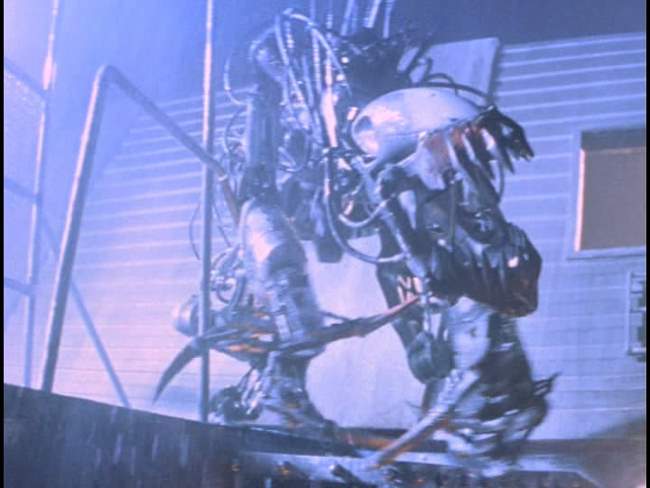
Overview: In yet another of the Alien/Terminator copycat movies, Death Machine is a low-budget, poorly thought out shlock-fest that tries to dazzle you with a largely incoherent in-depth plot and over-the-top acting. While another virtually unknown British Director, Richard Stanley, scored big in a similar but far more original copy-cat movie, Hardware, Stephen Norrington’s Death Match just doesn’t cut it. These types of movies live or die on the overall atmosphere and the quality of the fear the creature engenders. While Hardware excelled on both counts, Death Machine falls woefully short. Worse, Death Machine makes a lame attempt at humour by naming all the bit players with the names from the movies Norrington stole plot bits and visuals from (John Carpenter, Scott Ridley, Weyland, and Yutani)
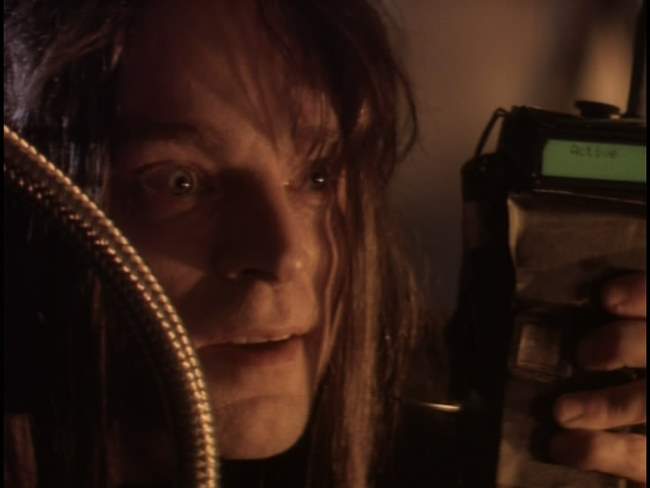
The Story: In the near-future, the evil Chaank Armaments corporation has engaged in a number of shady, classified project that have resulted in dissapearances and potential deaths. Public outcry has gotten out of hand, so for damage control, they bring in an upstanding principled new chief executive named Hayden Cole (Ely Pouget), a hot chick with a porn past to inspire trust and confidence amongst the masses. As she delves into things, it’s clear that the board of directors wants nothing to do with providing full disclosure. Why? Because there is an evil genius mad scientist in the basement named Jack (Brad Dourif), who has the dirt on everyone, and is hard at work at making a death machine to keep everyone in line. Additionally, Jack has created a process for transforming humans into killer-cyborgs. Unfortunately, this process is flawed, and all the cyborgs end up dying.
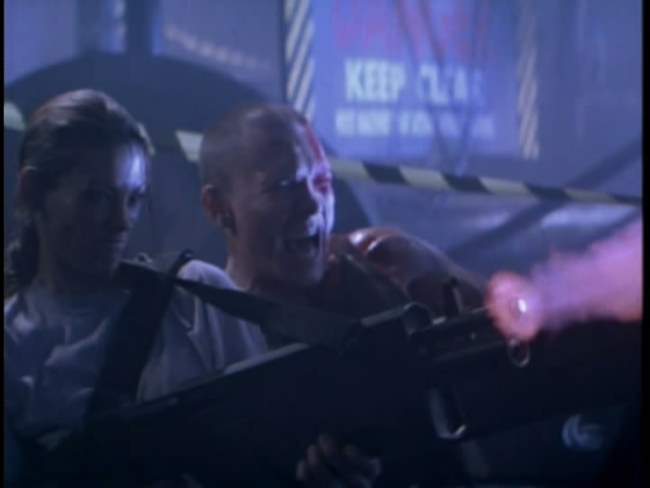
Eventually, the hawt chief executive challenges Jack, and all hell breaks loose. She and a few others become trapped in the building with some would-be amateur freedom fighter cyberpunk types who have invaded the corporation in the hopes of destroying it. Now they are all just trying to escape the robot known as the War Beast. Hayden and Sam Raimi (John Sharian), the leader of the amateur terrorists, spend the rest of the movie trying to evade and eventually kill the War Beast. I could go into more of the plot, but truly, its just not worth it.

The Robot Monster: OK, so we have this really tough robot thing – virtually indestructible. Anyone wanna tell me why this robot has like a hundred rubber tubs hanging out, and nobody who fights it in hand-to-hand combat thinks of grabbing them? More to the point, why don’t the thousands of rounds of bullets affect the tubes? Bottom line, this robot was more silly than scary. In Hardware, the robot was continually shown moving quickly in low-light situations. This allowed Stanley to get away with a low-tech, but very believable robot. Unfortunately, Death Machine doesn’t take this approach – it shows the robot in detail to make sure you see its faults. Color me not impressed.
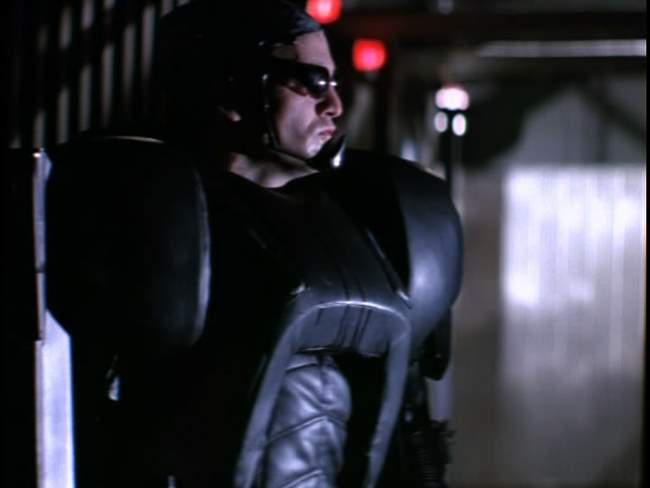
Yes, ladies and gentlemen, you can tell this is a cyborg because he’s wearing sunglasses. Also, he has that really big vinyl and plastic whatever-the-fuck-it-is on - DEFINITELY a sure sign of a cyborg warrior!
Death Machine’s Approach to Cyborgs: In Death Machine, the Chaank Armaments Corporation creates cyborgs by wiping someone’s memory and uploading it with detailed weapon systems training, and simple goals (e.g., protect me, seek out and kill “guy X”). In short, its approach to cyborgs assumes the human mind is synonymous with a hard disk. They even have an instance where a key character’s personality “backed-up” and then wiped from his mind to allow the “warrior personality” to be installed, and then later, they reload the initial personality. Puleeze, Norrington! I’m sure you coulda come up with a marginally believable cyborg warrior rationale. Too bad you didn’t take the time to think of one.
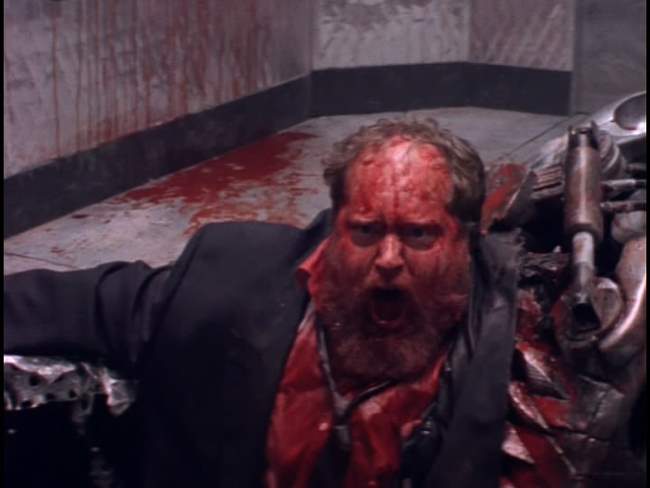
The Bottom Line: Truly, to even have a chance of being watchable, Death Machine would have needed to incorporate a heavy dose of T&A. While Ely Pouget has the looks, this never materializes. This is all the more annoying in that the inclusion of the porn reference flat out portends juicy T&A. Instead, we’re left with a shlock “B” movie, absent of T&A, without the effects, acting, plot or monster to carry the day. Brad Dourif’s character, while mildly amusing is just too over-the-top to stomach, and nobody else other than Pouget even stands out. Even worse, they screw up what should have been a very simple ending (this may be the only original part of the movie - in retrospect, Norrington should have copied this as well), leaving us with a almost complete let down, and no payoff for sticking around for 2 hours. In short, I don’t see much to recommend here.
~See movies similar to this one~
Movie Review By: SFAM
Year: 2003
Directed by: Andy & Larry Wachowski
Written by: Andy & Larry Wachowski
IMDB Reference
Degree of Cyberpunk Visuals: Very High
Correlation to Cyberpunk Themes: Very High
Key Cast Members:
Neo: Keanu Reeves
Trinity: Carrie-Anne Moss
Morpheus: Laurence Fishburne
Mr. Smith: Hugo Weaving
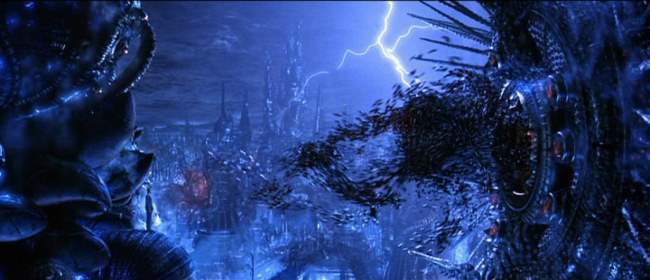
Overview: Yes, the majority of the population was disappointed with Matrix Revolutions. Many voiced issues with various movie aspects such as dialogue and acting. More still complained that the overall story was non-sensical, with many points seemly completely incoherent. Some even commented that even though it was incoherent, they absolutely loved the action sequences. Personally, I found an altogether different movie. At times I almost felt Matrix Revolutions was purposely written for someone exactly like me. My background in cybernetics seemed wonderfully tailored to understanding the trilogy from a science fiction perspective (versus the philosophical perspective that is most often explored) – as rarely do I find a symbolic struggle of positive and negative feedback systems so overtly played out in film. Strangely enough, many others tend to have this same sentiment (that the movie was MADE for them), although their backgrounds are very different from mine. In this sense, for those that LOVED Matrix Revolutions, something about the movie just “clicked” for them – in most cases, that special something was different for each person. While yes, the action is astounding, as are the visuals, its this aspect of Matrix Revolutions which is most intriguing to me. It may not be for everyone, but for those that like it, its almost tailor made.
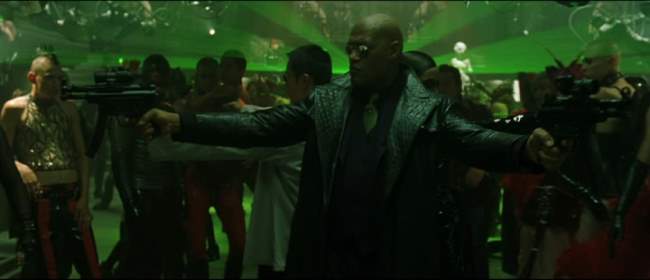
The Story: Matrix Revolutions is the third installment of the Matrix Trilogy, where Neo’s decision at the end of Reloaded causes a final confrontation between Zion and the Machines. In rejecting the Architect’s control system, Neo has thrown the relationship between humanity and the machines in a completely unpredictable direction. The machines are quickly digging to reach the last human city of Zion, while Neo, Morpheus, Trinity and a host of others look to recover from their last ditch attempt meeting with the Architect at the end of Reloaded.
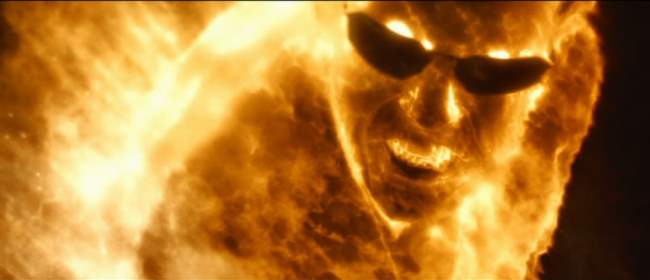
Nothing was at it seemed. The history of the one was a lie, all part of an elaborate control system. Now, in less than twenty hours, the machines will penetrate Zion’s defenses, and potentially destroy humanity forever. Worse, Neo’s mind has somehow separated from his body and now lies comatose next to Bane on-board the Ship called the Hammer. Morpheus is still despondent about the false prophecy, and the Zion’s defenses have been all but wiped out by a premature EMP pulse.
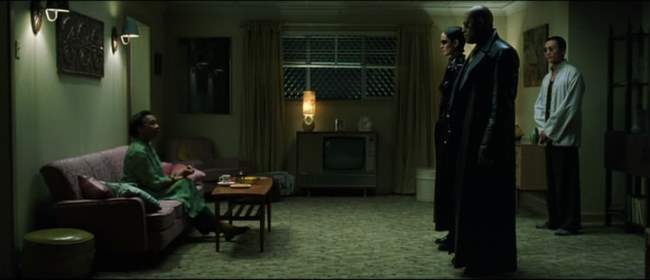
It turns out that Neo’s mind has been trapped in a place in-between the Matrix and the Machine City, inside something called the Mobile Avenue Train Station (better known as limbo, which is an anagram for “Mobile” Avenue). Unfortunately, this is controlled by the Merovingian. Trinity and Morpheus, along with Seraph must now convince the Merovingian to let Neo Free. Meanwhile, Mr. Smith has virtually taken over the Matrix with duplicates of himself while Zion prepares for the attack of the Machines, and decide to place virtually all their resources into holding the dock. As things become clear, Neo decides the only way he can save Zion is to personally go to the virtually impenetrable Machine City. Meanwhile, as the Dock Fight goes from bad to worse, Niaobi (Jada Pinkett Smith), Morpheus and company race back in the Hammer to help save Zion with the humanity’s last remaining EMP.
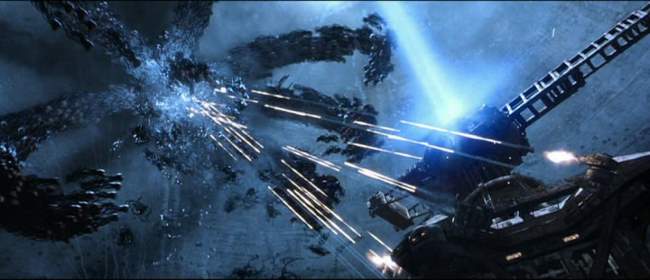
Revolutions is a War Movie: Whereas the first movie, the Matrix involved a personal awakening, and Matrix Reloaded was almost more of a chase movie, Matrix Revolutions is more a war movie than anything else. In this sense, each of the three movies are very different from one another. Many new characters are introduced in Revolutions, while some of the staples of the first two movies take more of a back seat. We see less of Morpheus here, for instance, but are almost bombarded with a myriad of secondary characters, each intended to bring us a sense of drama associated with the enormity of their undertaking. While one can discuss how well each of the minor characters worked, the need for their inclusion is rather clear – without them, the scale of the conflict doesn’t really work.
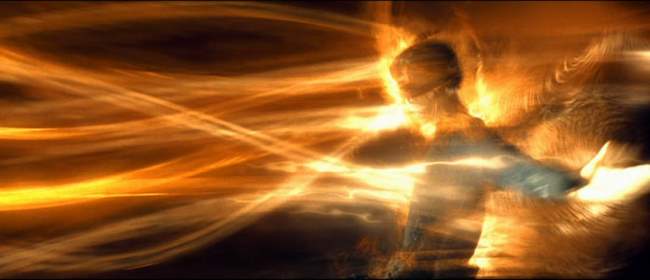
The Matrix Trilogy as a Participative Movie Watching Experience: Most movies are meant to be conveyed in a rather passive manner – one which may require the view to actively pay attention to what transpires but doesn’t require them to actively think about what they have seen. Conversely, quite a few cyberpunk flicks are just the opposite – animes like Serial Experiments Lain or Fragile Machine, extreme Japanse Cyberpunk flicks like Tetsuo, indie flicks like Puzzlehead, or even action flicks like Casshern all require the viewer to spend significant time actively thinking through the implications of what they just saw. The Matrix Trilogy, and especially Matrix Revolutions flat out requires active participation to make sense of it. Arguments abound on this point as many critics consider this a sign of bad movie making, while many Matrix fans respond with the inevitable, “You just don’t get it” comment, as if those who hate Revolutions are somehow intellectually inferior. My take on this is that this is more a sign of preference in movie tastes. Some people (like me) LOVE to encounter movies that take more than one viewing to really understand, whereas others absolutely hate watching films like this. Regardless where you come down on this, your perception of whether you like Revolutions or not will in large part be answered by your preferences on this scale.
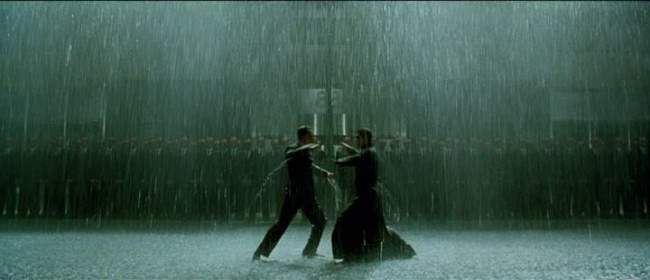
The Power of The One: The Oracle makes clear in her meeting with Neo that the “power of the one” comes from the Source, and that this power is necessary to communicate with the source. From a SciFi standpoint, the explanation for this is clear – the power of the one is based on the sentient learning program embedded in Neo from birth (the Architect tells Neo this at the end of Reloaded). As is documented in my Man-Machine-Interface essay, this is what gives Neo the power to attack the machines in the real world. Neo has Sysadmin-like powers so that he (the sentient program portion of Neo) is able to reboot the Matrix.

Getting Back to a Steady State: In Reloaded, Neo, with significant prompting from the Oracle has effectively wiped out the Architect’s negative feedback control system (meaning a cybernetic control system that “negates change from an initial goal state). The thresholds were exceeded, and the entire control system spun out of control. This, after all was the Oracle’s purpose. From a cybernetic perspective, the Oracle’s goal was to create a positive feedback loop (increasing change from an initial goal state). In doing so, she effected the complete destruction of the negative feedback system that had managed human-machine relations for the better part of 600-800 years. When a cybernetic control system exceeds its thresholds, it is possible for the system to again regain a steady-state, but almost never is it possible to return to the previous steady state. This truly is the Oracle’s purpose. By effecting out-of-control change (by creating the anomaly that is Mr. Smith), the Oracle created a situation where both the humans and machines would need to work together to stave off elimination of their species. The proposed steady state (peace) would have to be founded on a completely different set of assumptions. This would necessitate changes in the operation of the Matrix, and a far more integral relationship between the humans and machines.
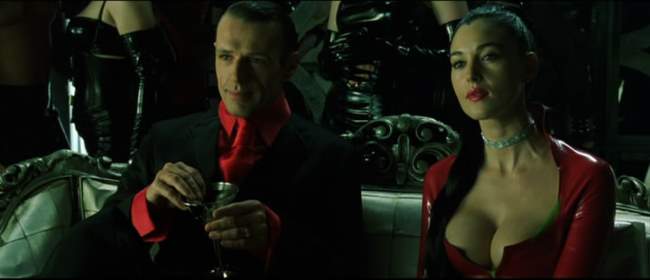
The Philosophical Aspects: Matrix Revolutions, even moreso than the previous films, is replete with interesting philosophical references from Hinduism, Christianity and various writers that ideas such as freewill and determinism, the nature of reality, the notion of purpose, and so on. In totality, the Matrix is a virtual cornucopia of ideas which ends up leading towards a larger integration of purpose, one which serves to unite the needs of man and machine in their struggle to survive. That these ideas are melded into a very compelling story – one which can almost completely divorce itself from the SciFi aspects and still work is pretty amazing. One can easily view the trilogy from the perspective of Neo as a messianic figure who’s story arc involves the coming of age, the sheding the bonds of slavery, and eventually the recapturing of humanity’s (and the machine’s) salvation. The Matrix Trilogy is one of the very few movies which have spurned an ever increasing number of philosophical analysis books – truly this is rather unique, and itself something to be celebrated.
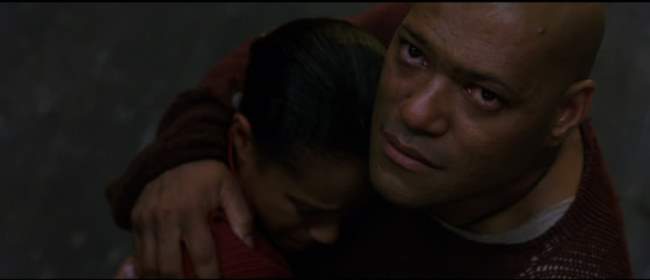
The Acting: While much has been said about some uneven performances, by and large, the leads in Matrix Revolutions turn in very solid performances. Keanu Reeves deserves additional credit for the incredible work he in preparation for the part – his martial arts and wire work in Revolutions are just terrific. Hugo Weaving turned in a supporting performance worthy of what I would consider an Oscar nomination. His monologue (“Why Neo, why?) near the end is absolutely riveting. However some of the secondary actors, most notably the “kid” (Clayton Watson) were pretty bad. Also, there were some dialogue issues in Revolutions which could have been worked a bit more (shortening the Trinity “you gave me one more chance” scene, for instance). In light of the incredibly ambitious goals for Matrix Revolutions, its not too surprising that some of the details could have been worked more.
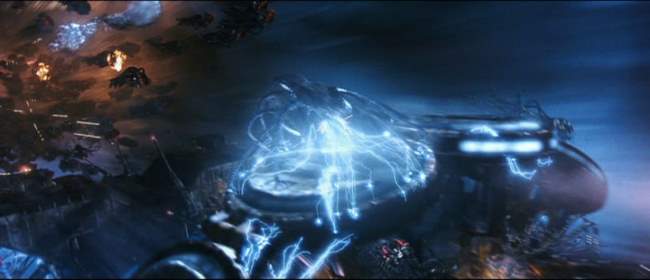
The FX: Matrix Revolutions has some of the most impressive FX on film. Regardless whether or not you hate the film, the quality and enormity of the FX we see in Revolutions is a wonderful cap to the series. From an FX standpoint, the Dock Fight was an absolutely monumental undertaking. This combination of CG, miniatures, full-sized models with human actors, and motion-capture provided one of the great battles ever seen on film. Because of the speed and chaos, like many elements in Revolutions, it really does take an extra watching or two to really get the sense of what’s happening. But once you aren’t overwhelmed by the enormity of it, the pace of the battle and the actions of the machines make sense. In fact, it becomes clear that the dock fight is one of the most significantly choreographed combat scenes ever put on film.
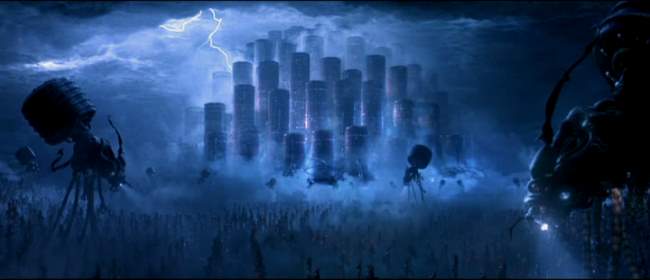
The Visuals: Visually, Matrix Revolutions is a stunning movie. While the bulk of the visuals use a blue-red color sceme, the familiar green matrix colors are also prominently displayed. Similarly, we get bursts of yellow-orange colors denoting machines disconnected from the Matrix. Shadows are liberally used in the larger panoramic scenes, while many of the close-ups are more starkly lit. Overall, the mood of the blue-red color scheme is reminiscent of Star Wars’ Empire Strikes Back, in that we get the same darkened atmosphere.
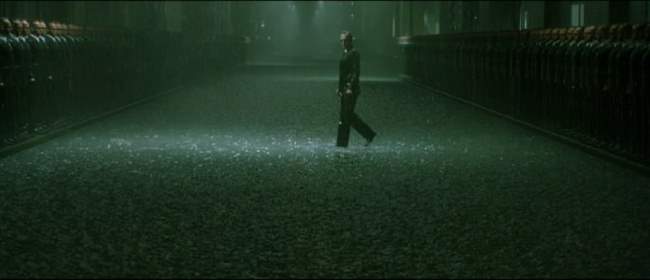
The Score: Don Davis’ music for Matrix Revolutions provided a terrific accompaniment. The diversity, from industrial sounds to haunting choral arrangements served to heighten the tension and energy at pivotal scenes. Probably the highlight of this was at the beginning of the Super Burly Brawl between Neo and Mr. Smith where the piece, “Neodammerung” signals the final confrontation.
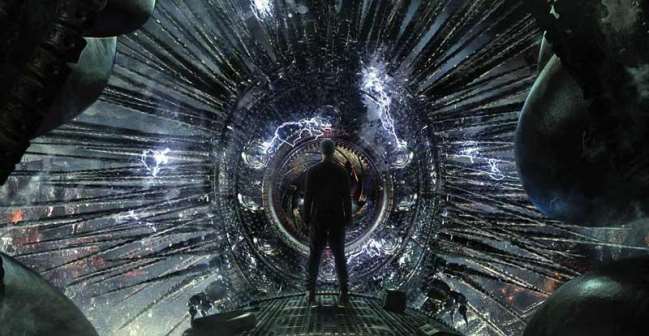
The Bottom Line: The Matrix Trilogy is one of the most ambitious projects ever undertaken in movies. It combines almost two distinct storylines – one based on philosophy and religion and the other based on science fiction – with revolutionary effects, great action and truly interesting ideas throughout. As a cyberpunk dystopia, it’s hard to find a situation worse than the one posed in the world of the Matrix. While the majority of its viewers found fault with Revolutions, especially the ending, I personally found enormous satisfaction out of both the ending and the movie as a whole. While I certainly agree that there are some acting and dialogue issues, as a whole, Revolutions was a terrific ending an absolutely terrific trilogy.
Matrix Revolutions Page 2: More Screencaps –>>
~See movies similar to this one~
Movie Review By: SFAM
Year: 1997
Directed by: Jean-Pierre Jeunet
Written by: Joss Whedon
IMDB Reference
Degree of Cyberpunk Visuals: Medium
Correlation to Cyberpunk Themes: Medium
Key Cast Members:
Ellen Ripley: Sigourney Weaver
Annalee Call: Winona Ryder
Dr. Jonathan Gediman: Brad Dourif
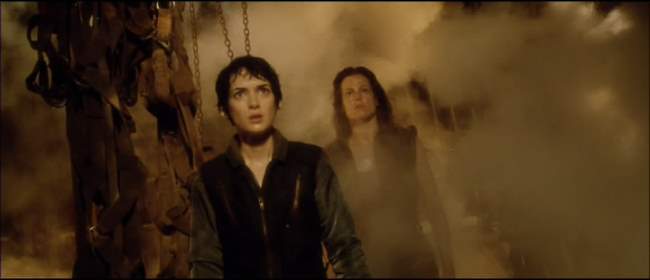
Overview: While Alien 1 and 2 were both stellar movies, the later two sequels definite suffer in comparison. Still, Alien Resurrection provides a significantly different Ripley than is encountered in the first three movies. Ripley is a clone, and an altered one at that. In fact she’s a merging of both the alien and human. With a significantly different approach to visuals and storytelling, Alien Resurrection may not equal the quality of the first two, but certainly can be considered original, which is sometimes a feat in itself for a sequel. The cyberpunk elements, while present, are still sedated, similar to the first Alien (I don’t really consider Alien 2 or 3 to have enough to consider them cyberpunk).
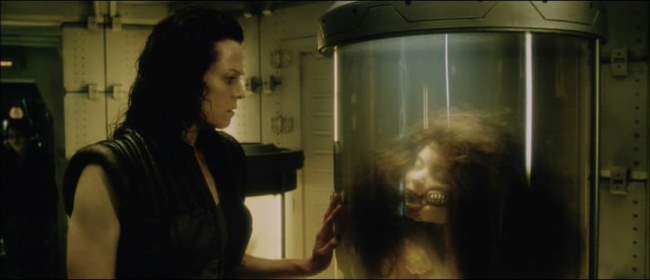
The Story: Two hundred years after her death, Ripley (Sigourney Weaver) has been cloned for the purpose of giving birth to the Alien Queen inside of her at the end of Alien 3. It’s not the corporation this time, instead it’s the good ‘ole government. While it’s never really fully explained how the melding of the two came about, you basically have to “roll” with it if you want to enjoy the movie. In any event, Ripley somehow survives the birth of the Alien, and is kept alive for “study” purposes.
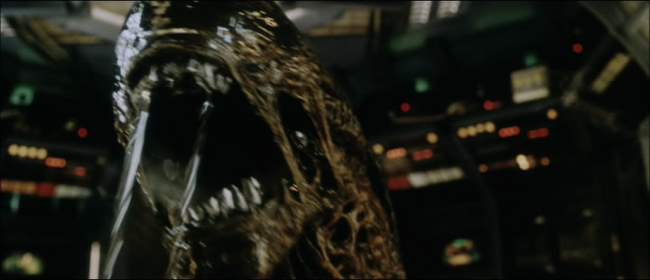
Meanwhile, the Alien Queen that Ripley births requires hosts for her eggs. Enter a group of mercenaries led by Elgyn (Michael Wincott). His group also includes Winona Ryder, Dominique Pinon, Ron Perlman, Gary Dourdan, and Kim Flowers. The mercenaries have captured a ship full of people in suspended animation, and have brought the victims to the military research ship for money and other goodies (including a few days sleep in a regular bed). Things go bad when fanatatical crazed head scientist, Dr. Jonathan Gediman (Brad Dourif) makes the mistake of leaving three of the Alien births in the same cage. Two of the aliens kill the third, who’s acidic innards then create a hole in the floor, thus forming a jail break. From there, its on – aliens are in control and have a field day in eating up the poor humans who can’t escape on time. But unfortunately for the Queen, her DNA has been melded with Ripley’s and her second generation offspring has turned out differently than intended.
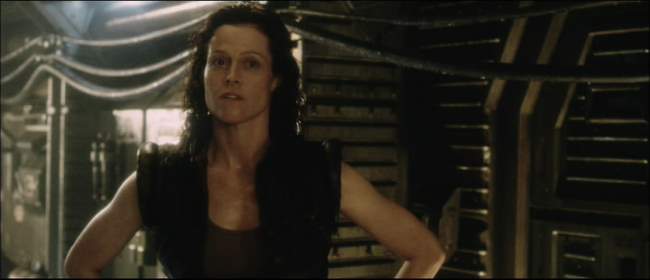
Ripley is Different in Resurrection: In Resurrection, we don’t get the tired, beaten down Ripley from the previous two movies who somehow manages to persevere and survive. Instead, Weaver takes to her genetic change with a gusto that mixes just the right mix of alien swagger, camp, and tender humanity. Most importantly, Weaver doesn’t take herself too seriously here. Ripley’s smirks more than anything else make the impossible set-up bearable. Its almost as if she’s saying, “Yeah, this is Frankenstein 4, but you knew the monster (me) needed to come back from the dead if there was to be a sequel, right? Just roll with it and we’ll be OK.” In short, Weaver almost single-handedly makes this sequel work. Ripley’s one liners (such as, “Who do I have to fuck to get off this ship?”) sometimes even come close to equaling those in Aliens. However, this approach can only go so far - if they ever plan on doing an Alien 5, they’re gonna need to revive Abbot and Costello!
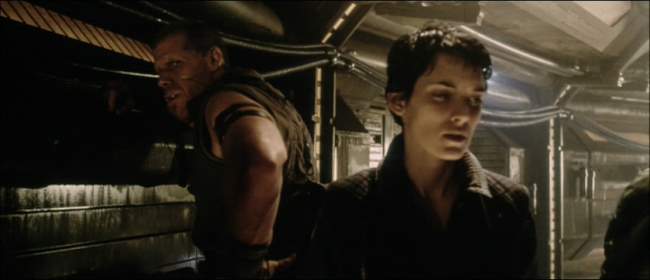
The Rest of the Cast: While Weaver shines, the same cannot be said of the rest of the cast. Some of the member are really hit or miss, while others fail altogether. Winona Ryder’s role was a bit too much for her to pull off. First she had to be a believable mechanic (Kaylee, she’s not!), and then had to be an undercover resistance member and finally had to work as a {SPOILER – highlight to read} second generation android. I don’t know who could have worked all three of these aspects into a coherent whole, but Ryder was not able to pull it off. Although, Ryder does shine in some of the scenes – especially those that are similar to Ripley’s role in the first movie where the Ryder is struggling to maintain sanity when everything is stacked against them. For other examples, Brad Dourif as the crazed scientist is too over the top, and Dan Hadaya as the military commander comes off as a complete imbecile. Two notable standouts are mercenaries Ron Perlman and David St. James – both turn in very solid and interesting performances.
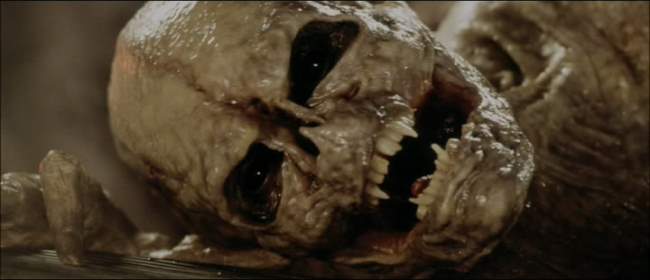
The DNA Mixing: OK, the DNA mixing explanation is just too hokey to work. Joss Whedon deserves some credit for at least not running away from this impossible task – instead he makes it a centerpiece to the story (but it still doesn’t’ work – then again, I don’t think anything would). Basically they needed a way of both recreating Ripley will still keeping her memories intact. Their work-around is to state that Ripley’s and the Alien’s DNAs melded together (I suppose this happened in the lava? Good thing they were able to retrieve it, ey?). OK, fine, but I have a few questions: Aliens are uniquely different from humans but their DNA is so close that its not distinguishable form one another? Or assuming the DNA was melded, how exactly did they know what they were looking at? More to the point, how did they figure out (even with lots of trial and error) to make two completely separate organisms out of the DNA? But even taking the ocean of salt needed to buy that explanation, how is it that an alien organism who grows by eating the material in the lungs is able to read Ripley’s memories and retain them? Again, while this clearly is problematic, you really just have to roll with it if you want to enjoy Resurrection.
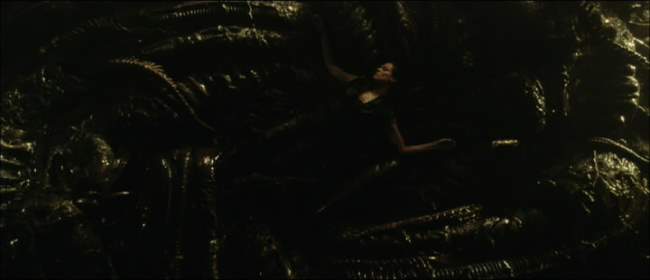
Genetic Manipulation Scare: Probably the scariest aspect of Alien Resurrection is the notion that in the semi-near future, genetics will be advanced enough and so well understood that even your basic crackpot scientists with the right equipment can play Josef Mengele in experimenting with mixing lifeforms to their hearts content. One can imagine a number of variations to this, but the jist of the concern is that its not too far a stretch to imagine that in the near future, less savory governments or corporations may be lured to do various genetic trials of this kind in the pursuit of fame and profit. This concept in Resurrection is as cyberpunk as one can get.
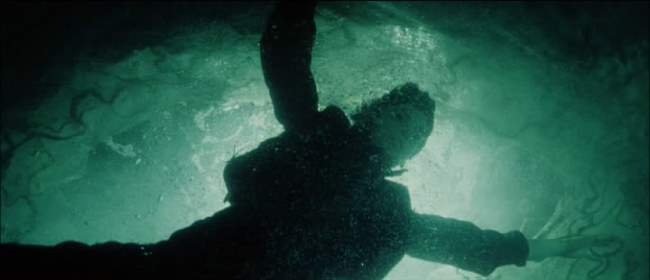
The Android: Unfortunately the back story is glossed over, but in Alien Resurrection, the androids have somehow developed a second generation android, one who is not beholden to human command. Not surprisingly humanity targeted them for termination, which caused the remaining second generation androids to burn out their communications devices and go into hiding. In Alien Resurrection, it’s the android who holds the tenets of humanity most dear. The android is more concerned with the fate of mankind than all the shallow and flawed humans in this movie. The android is even religious. One wishes this aspect of the androids was explored. If they truly feel that they indeed have a purpose for existence, how is this rationalized, and how have they changed the concept of a human deity to accommodate their self-worth?
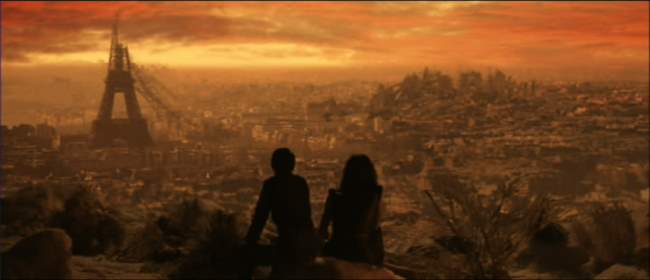
The Visuals: Director Jeunet and visual effects supervisor Pitof deserve credit for creating some wonderful visuals in Alien Resurrection. Resurrection contintually treats us to some wonderfully composed shots – shots that far exceed the qualities of the acting. Even if the plot and acting turn you off, the cinematography, wonderful set pieces, models and creature FX will help keep Alien Resurrection bearable. Like many cyberpunk films, a single color dominates the film – yellow in this case. Yes there are some blacks, but yellow seems to permeate all the key scenes.
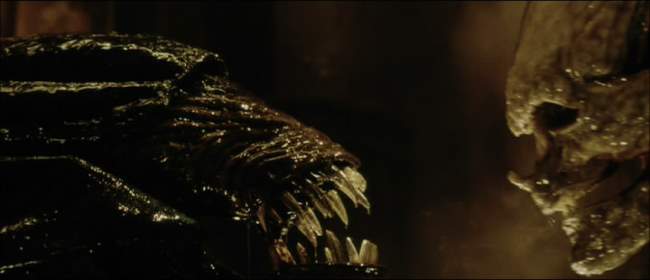
The Bottom Line: Yes, Alien Resurrection has an extremely problematic story within a flawed movie, but it ends up being more fun than it probably deserves. Even though the rest of the cast doesn’t always support her, Sigourney Weaver turns in a terrific performance. This, along with the originality, the wonderful cinematography and FX make Alien Resurrections a step up from Alien 3, and worthy enough to watch. While the cyberpunk elements are subdued, the android along with the genetics and dystopic civilization (destroyed by human wastes and technology) are enough to include it in this site. Alien Resurrection won’t flip your world like the first two did, but its still worth a watch.
~See movies similar to this one~
Movie Review By: SFAM
Year: 2006
Directed by: Richard Linklater
Written by: Philip K. Dick (Novel) Richard Linklater (Screenplay)
IMDB Reference
Degree of Cyberpunk Visuals: Medium
Correlation to Cyberpunk Themes: Medium
Key Cast Members:
Bob Arctor: Keanu Reeves
James Barris: Robert Downey Jr.
Donna Hawthorne: Winona Ryder
Ernie Luckman: Woody Harrelson
Charles Freck: Rory Cochrane
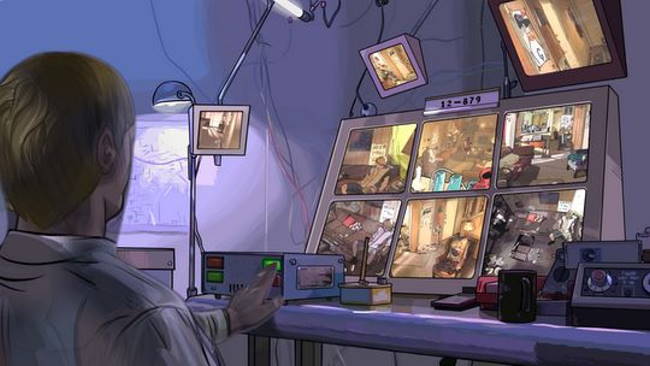
Overview: In a very faithful adaptation to Philip K. Dick’s story of the same name, Linklater treats us to an interesting, slow moving story about abuse – abuse of power, drug abuse, abuse fo friendships, and abuse of the self. While most of the publicity about Scanner Darkly is about the rotoscoping technique used, the story itself is good enough that it probably could have worked in live action as well. A Scanner Darkly is engaged in a slow-opening process – hopefully you all get to see soon in a theater near you.
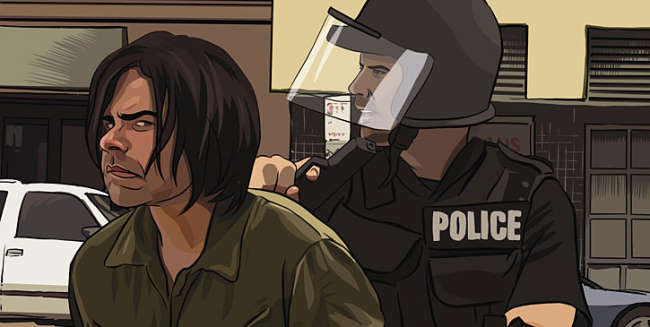
The Setting: Seven years into the future, a drug known as Substance “D” has transformed society. People are divided into addicts and those who haven’t taken Substance “D.” Society is quickly collapsing. In response to this threat, the government has transformed the society into a surveillance state, where neighbors spy on neighbors, and personal freedoms have been minimized. Everything is organized for instant observation – license plates are now bar-coded, and security is all DNA based. Trust has all but vanished in the world where Scanner Darkly resides. In its place, we have people who are constantly concerned about each other’s ulterior motives, and think nothing of stabbing someone in the back if only to win short term gains.
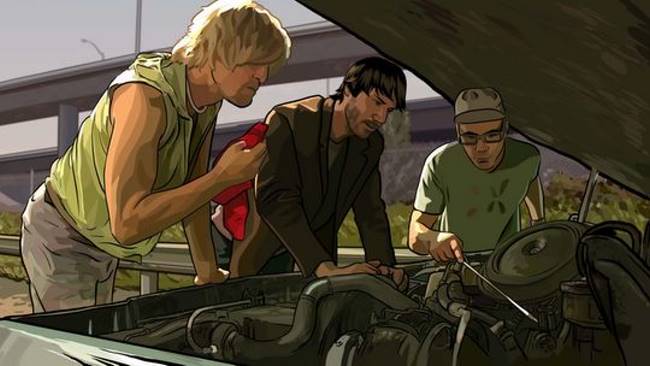
The Story: Scanner Darkly takes place seven years into the future and follows the plight of a close-knit group of addicts living outside of Anaheim, California. Bob Arctor (Keanu Reeves) is works as a reluctant undercover police officer (called “Officer Fred” at work), who lives with group of addicts that he eventually needs to perform surveillance on. Bob no longer believes in what he is doing, but still goes through the motions. At work, all the police wear “scrambler suits” to ensure nobody knows who they are. As the story progresses, we get to see the absurd lives that each of the addicts lead. Bob’s girlfriend (Winona Ryder) is a coke addict who freaks out if touched; his friend Charles (Rory Cochrane) sees insects crawling over him at all times, and his two room mates are clearly fried beyond all recognition.
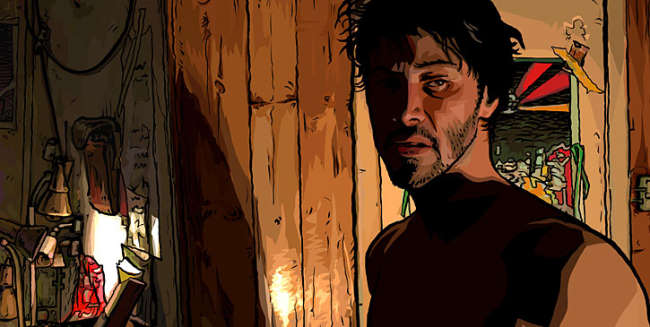
Unfortunately for Bob, his addiction is growing too. His grasp on reality starts to weaken as the hallucinations increase. He starts seeing his room mates as huge insects. Worse, one of his room mates (Robert Downey Jr.) visits the police department to narc on Bob. Bob, as the disguised Officer Fred, has the task of taking down his room mate’s statements and investigating them. As the movie proceeds, Bob becomes more disillusioned with his job and life, and begins to realize that he is losing his humanity.
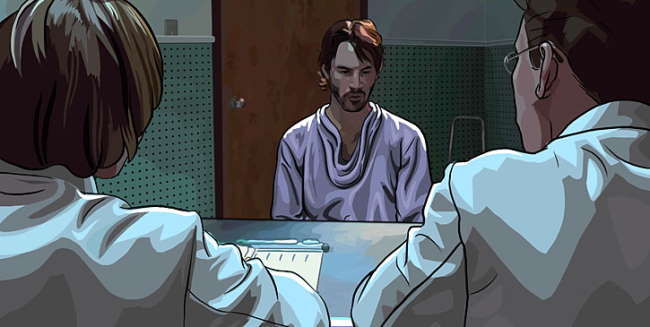
An Excersize in Duality: Scanner Darkly sets a number of issues up in a duality. We have left brain – right brain separation as a side effect from extreme exposure to Substance “D,” we get surveillance and security opposing personal freedoms, and the two doctors treating Bob overtly represent the left and right hemispheres. Everything in Scanner Darkly is about dualities of tension, and the descent of humanity in the face of this tension.
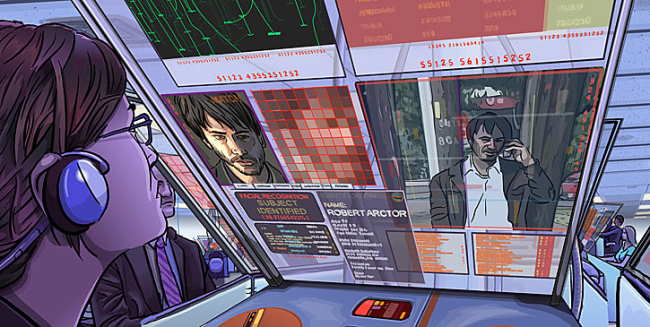
The Paranoia: A Scanner Darkly delves into the paranoia mindset that develops when drug use combined with an out of control surveillance society has taken hold. Personal rights and individual freedoms are significantly subordinated in a society where the government is after the supposed drug barons. One begins to question, however, whether the drug barons themselves are just yet another tool by the government to gain complete control over the population. The idea of government abuse of power permeates virtually every scene. The ranting sessions within the drug addict group are all based on paranoid delusions about what the government is currently doing to them. Worse, some of their “paranoid delusions” end up being true!

Drugs Are Bad, K? Scanner Darkly pounds this message in as many ways as possible. Wanna screw up your perception? Substance “D” is for you! But don’t worry, its effects are not always permanent, just most of the time! Within the addict group, we see different people in various states of insanity. The message is clear – once you’re on this stuff, the descent into insanity is all but assured.
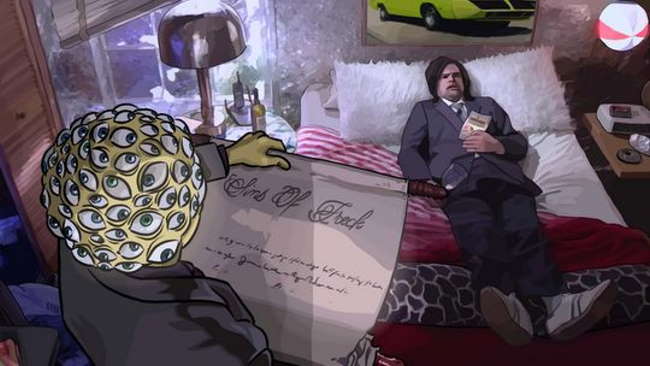
The Rotoscoping: The rotoscoping in Scanner Darkly works well as a device to create an atmospheric, otherworldly film, even though most of the scenes almost came off as red-neck central. Unlike Waking Life, where the hand drawn animation on top of live action is wildly uneven (on purpose) with the characters, for the most part the rotoscoping just gives it an ambiance. Also, the rotoscoping provides a wonderful base for the various hallucinations that happen in the course of the movie. Linklater’s rotoscoping technique seems to work best when there isn’t that much action on-screen. In some of the movement scenes (car riding, running, etc.), there is almost no difference between the rotoscoping and live action. There was also a lot of variances with the black lines around the faces – mostly this was pretty subdued, but in a few scenes, the black lines almost dominated the scene.
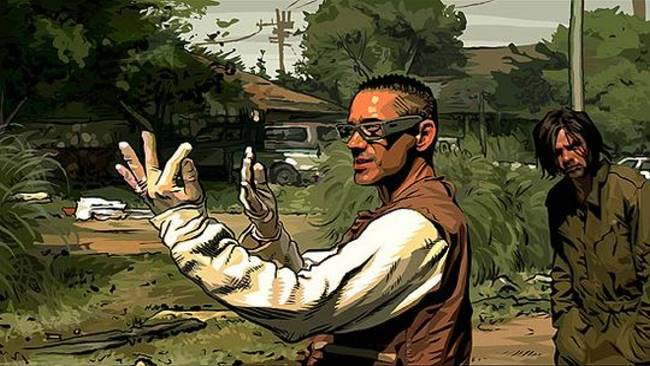
The Acting: For the most part, the acting is terrific in Scanner Darkly. Robert Downey Jr. especially shines, but Reeves’ performance fits perfectly for a man overtaken by events. Winona Ryder has some pretty solid moments (especially at the end), as does Woody Harrelson and Rory Cochrane. The better scenes usually involve Downey and another character involved in truly bizarre conversations. Some with Downey and Harrelson in particular are pretty funny.
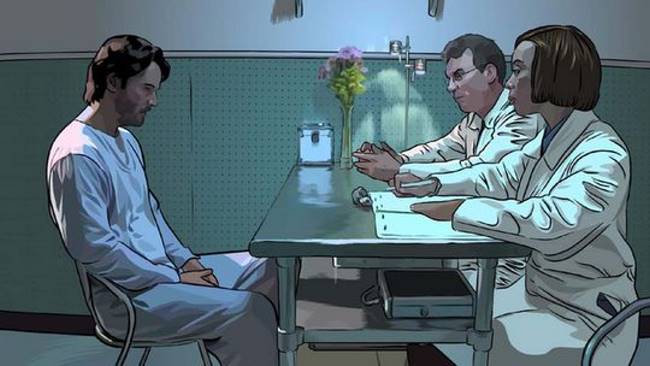
The Bottom Line: A Scanner Darkly is a movie with great acting, interesting discussions and a very powerful ending. That said, some parts of Scanner Darkly come off as overkill (the drugs are bad part, for instance), whereas others could easily have benefited from more elaboration. Still, these are minor complaints, as the overall movie has terrific acting, a great score (by Radiohead), and an interesting, well constructed message. Fair warning though - this is NOT an action movie. The vast bulk involves people milling around and talking, without any real action ever taking place. As long as action isn’t necessary for you to enjoy a good cyberpunk flick, give Scanner Darkly a try.
~See movies similar to this one~
Movie Review By: SFAM
Year: 1980
Directed by: Fred Barzyk & David R. Loxton
Written by: Diane English & Roger Swaybill (script), Ursula K. Le Guin (novel)
IMDB Reference
Degree of Cyberpunk Visuals: Low
Correlation to Cyberpunk Themes: Medium
Key Cast Members:
George Orr: Bruce Davison
Dr. William Haber: Kevin Conway
Heather LeLache: Margaret Avery
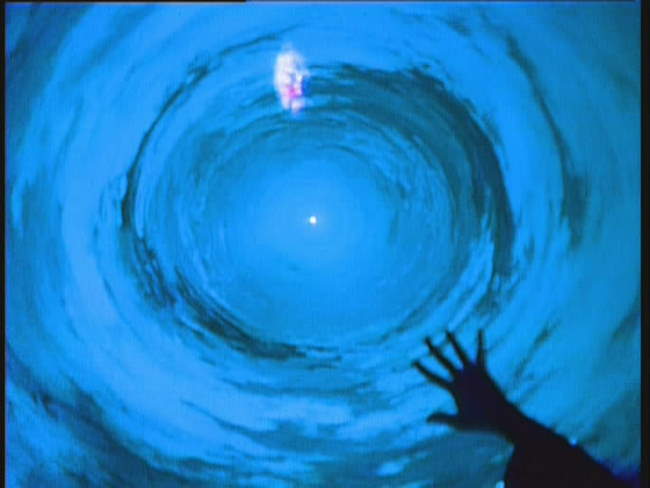
Overview: Lathe of Heaven is one of the classic SciFi books by Ursula K. Leguin. The 1980 adaptation (unlike the 2002 version) stays pretty faithful to the book, and is a very well done low-budget made-for-TV movie. Unfortunately, the original master was lost, so the DVD transfer was taken from a VCR recording of the 1980 TV broadcast. The quality isn’t great, but the story more than makes up for it. Lathe of Heaven is as symbolic as much as it is a narrative. Overall, the film provides an immersive experience with a truly interesting ending.
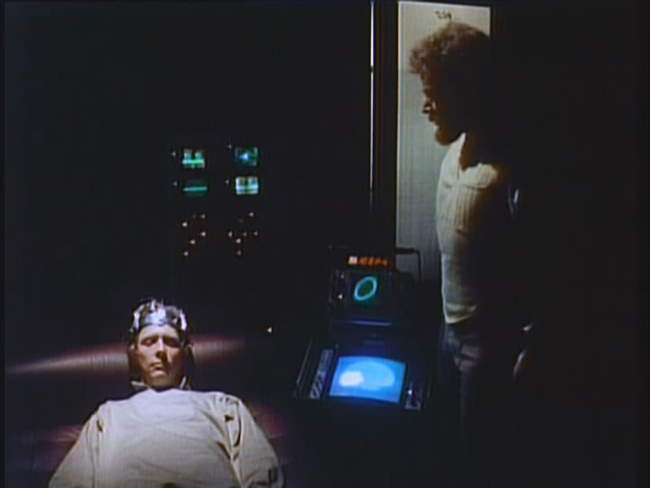
The Story: Thirty years into the future, the world has been decimated by a nuclear holocaust. George Orr (Bruce Davidson), having just been exposed to massive radiation lays dying. Somehow his body is changed, and he has the power to “dream” the world back into existence, just as it was, but without the nuclear holocaust. He forgets that this has occurred and tries to live his life normally, but is continually plagued by dreams that can effect changes in reality. In this dystopic, controlling future, he is forced to undergo psychiatric therapy, and is assigned to Dr. Haber, an expert in dream problems. George is looking for Dr. Haber to “cure” him, but Haber has other ideas.
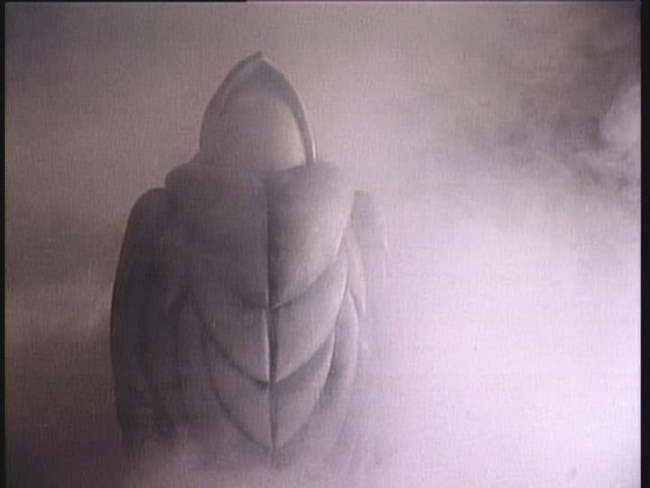
Dr. Haber quickly realizes that George is not crazy, but in fact possesses the most powerful gift ever given to man. Haber sees this as an opportunity to reshape the humanity and the world itself to become the ideal place that Man has always intended. Haber, using his dream-enhancement technology, asks George to have an effective dream about removing pollution. George does, but ends up removing all clouds, leaving the earth ever increasingly hot and dry. Haber forces George to dream of a way to cure overpopulation – this results in a plague that kills of 75% of the world’s population. Haber forces George to dream of peace on earth which results in an alien invasion that unites humanity but which can lead to the destruction of the earth itself.
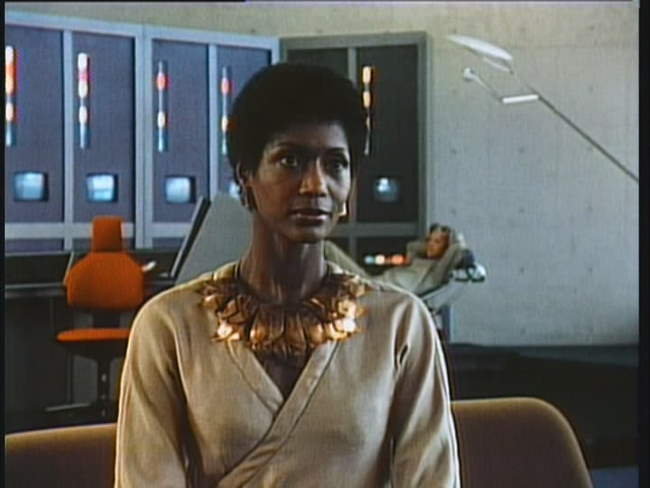
Even though Haber feigns ignorance of what’s really occurring, George quickly figures out that Haber is using him. Unfortunately, George doesn’t have the force of will to truly confront Haber. Instead, he enlists the services of a lawyer named Heather (Margaret Avery) to help get his psychiatrist changed to someone other than Haber. Unfortunately, when Heather goes to visit a session, it is already too late, as George’s effective dream has just killed off 75% of the world’s population.
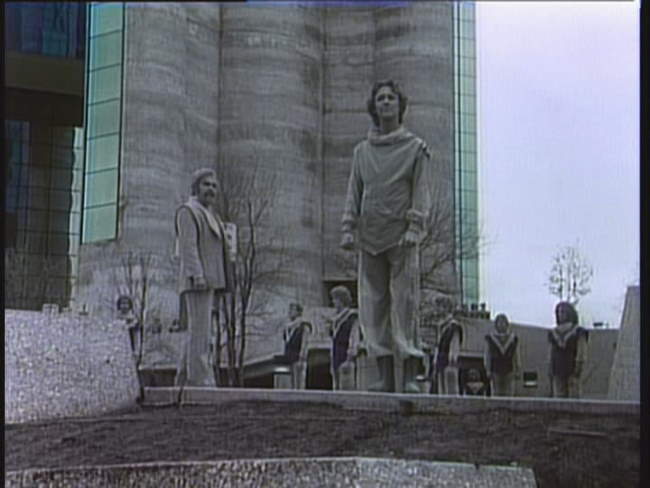
This pattern of George leaving, and returning continues, finally resulting in Haber forcing George to dream of removing racism (which results in everyone becoming gray) – Haber’s real purpose is to capture and duplicate George’s powers through his dream machines. Haber decides that the maladies are caused by inadequacies in George, and that he, an enlightened scientist will be able to have pure dreams that will result in the betterment of mankind. Unfortunately, when Haber dreams an effective dream, his results in a dream that will “unmake” reality. Only George can come and try to challenge Haber to a test of wills to bring a semblance of reality back.
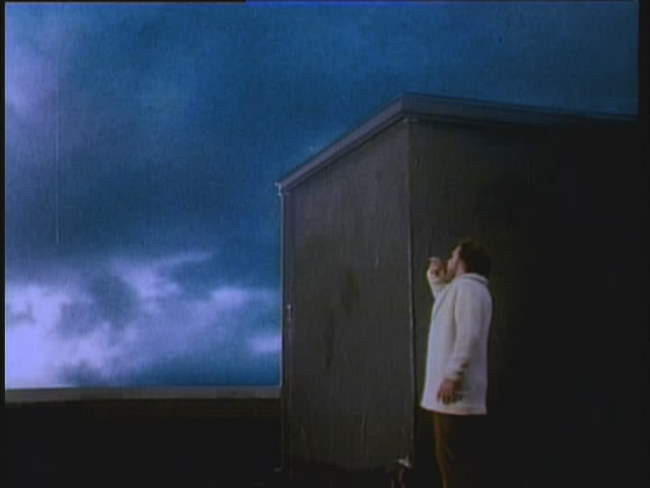
Taosim versus Positivism: Lathe of Heaven sets up a dual between a Taoist philosophy of participation versus a positivistic one. George Orr, representing the Taoist philosophy, is perfectly willing to let the world take its own course. Even though he has the power to change the course of humanity, he prefers to go with the flow, and understands that overt and specific changes to a very complex and interdependent world will result in disaster. Dr. Haber represents the positivist view, and sees technological advancement as the primary means of improving the human condition – moreso, he believes his duty as a scientist is to utilize George’s gift to transform the world for the better. After experiencing a series of continually worse impacts to the world when forcing George to use his power, Haber finally decides the problem is with George’s unconsciousness. It never occurs to him that the real danger is in converting George’s power to a technology that can transform reality.
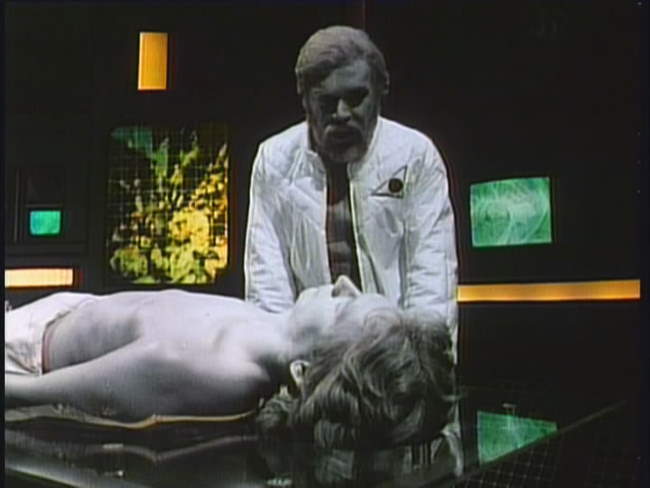
Le Guin’s message is clear: incredible power, especially augmented by technology, cannot be used in a simplistic way to transform a reality which is complex and intertwined. Instead, those interested in change must “go with the flow” of reality and change the human condition within the context of there normal interaction. The use of dominating power over nature will result and a dystopic future. This is in fact what Lathe of Heaven portrays.
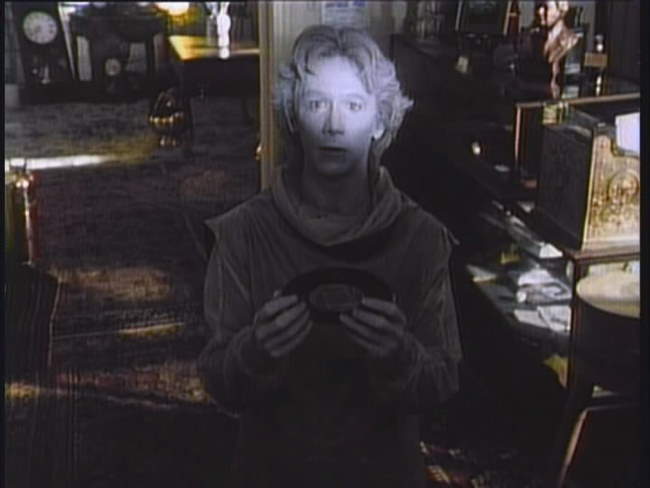
Is Lathe of Heaven Cyberpunk? I do agree that Lathe of Heaven at best is a cyberpunk fantasy. I include it here primarily due to the use of technology, invented for the purpose of human betterment, that ends up instead almost destroying humanity. Haber’s dream enhancement technology results in increasing George’s capabilities, and ultimately leads a true cyberpunked future. Human diversity is quashed when everyone left alive (after the plague kills over 75% of the population) turns gray. Individuality is suppressed in an attempt to eliminate conflict. In the end, the message is a similar cyberpunk theme – the use of technology to remake the perfect society results in a dehumanized, sanitized dystopia.
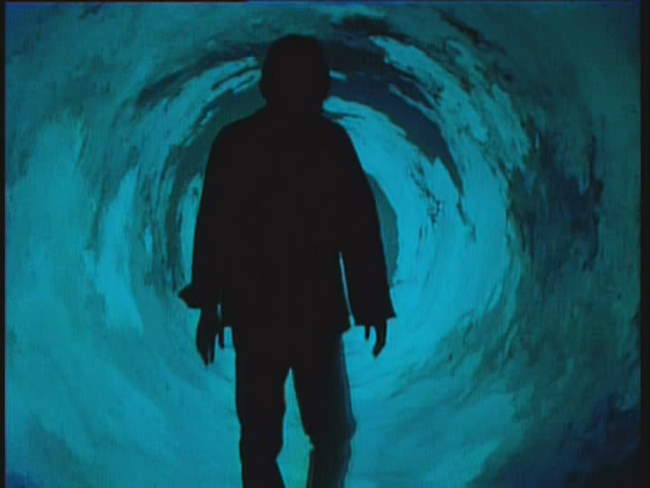
The Bottom Line: Although low budget, the Lathe of Heaven is effective in transforming a very philosophical book to a motivating film. The dual of Taoism versus positivism is mirrored in the colors, where the Taoist earth tones dual the technological grays and whites. The three leads deliver quality performances, and the story itself is captivating. While some of the FX are suspect, and the quality of the DVD is poor (the original master was lost), Lathe of Heaven is well worth a watch.
~See movies similar to this one~
Movie Review By: SFAM
Year: 1985
Directed by: Terry Gilliam
Written by: Terry Gilliam, Tom Stoppard & Charles McKeown
IMDB Reference
Degree of Cyberpunk Visuals: High
Correlation to Cyberpunk Themes: High
Key Cast Members:
Sam Lowry: Jonathan Pryce
Jill Layton: Kim Greist
Archibald ‘Harry’ Tuttle: Robert De Niro
Mrs. Ida Lowry: Katherine Helmond
Michael Palin: Jack Lint
Spoor: Bob Hoskins
Mr. M. Kurtzmann: Ian Holm
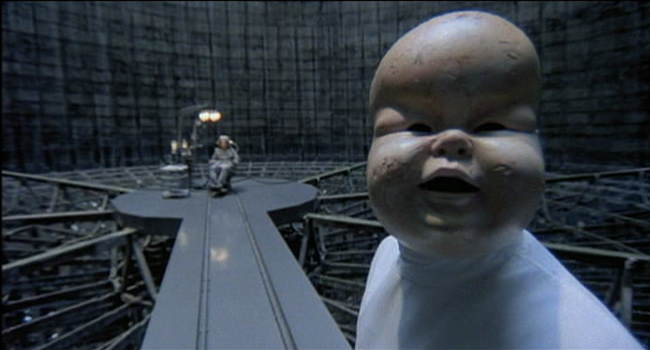
Overview: Terry Gilliam describes Brazil as “Franz Kafka meets Walter Middy” - this sort of fits. Using the name of Arry Barroso’s 1930s escapist song, Brazil is set in a nightmarish, fantasized dystopic future, Gilliam gives us a story about humanity attempting to escape reality by retreating into one’s own dreams. This is all the more interesting given the enormous fights Terry Gilliam had to engage in with Universal to even get the picture (in a non-bastardized form) released. Brazil is a visual and thematic tour-de-force which deserves a watch by all who are interested in having movies provoke deep thoughts, long after the film has concluded.
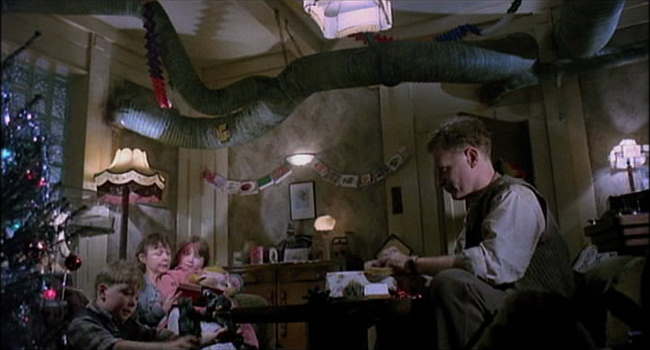
The Setting: Brazil takes place in a fantasized dystopic future where runaway, controlling, technocratic bureaucracy that has invaded all aspects of daily life. Arcane forms with incoherent instructions are required to do anything, but the goal is always completeness and finality over actual results. Appearances are everything in Brazil – actual human relationships are a luxury most do without. Humans survive in this world by keeping their “real” selves bottled up inside as a cocoon, while overtly they serve their role as a specific cog in the system. Keep the desk clean, the expensive suit pressed and your family looking perfect and you’ll be alright. Continually we see non-human responses to horrific disasters. In one restaurant scene, half the patrons have been blown up by a bomb, but the maître d’ is far more concerned with hiding the destruction from his elite patrons by erecting a pleasant backdrop than he is in helping those horribly injured.
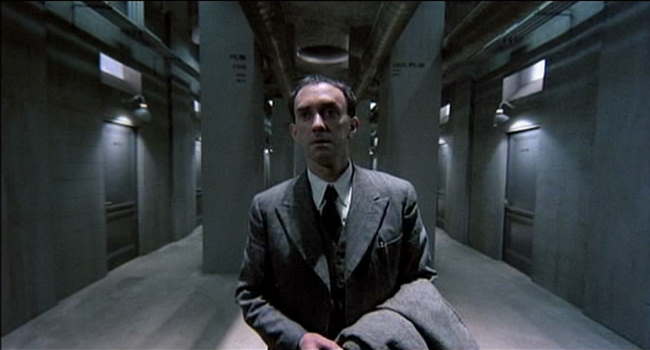
The Story: Sam Lowry (played wonderfully by Jonathan Pryce), our hero, from the beginning adapts to the system, but separates his “true” self in his dreams. Sam works as a minor cog in a the massively large bureaucracy called the Ministry of Information. The Ministry of Information eats up 7% of the total GDP in its pursuit of society’s subversive elements, including the terrorists, who randomly bomb the rich and wealthy throughout the movie. Even though Sam comes from a prominent family with connections, he wants nothing to do with career advancement. Sam long ago gave up aspirations, and only wants to get through life unnoticed - until the love of his dream life appears in the real world. Sam throws everything else aside in order to meet up with this chick, but unfortunately, the “system” and even his own preconceptions continually get in the way. As the story unfolds, we see the bureaucracy in action in what becomes a struggle of freedom and individuality against the technological domination of humanity.
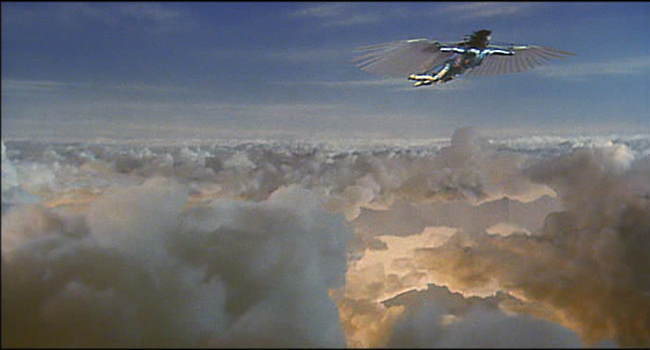
The Visuals: Brazil is a visually powerful movie. In its more sedate moments, Brazil starts off as a noir-ish style setting with 40s style suits and hats, tall squared buildings, computers driven by typewriters and dark lighting from above. But very quickly, Brazil changes to a surreal experience, which shoes converted to hats, ventilation pipes dominating every roomscape, and massive expansive buildings without ground floors. Ventilation pipes are Gilliam’s symbol for technology run rampant. Massively tall buildings are symbols for bureaucratic power. Throughout, dark gray is the dominating color. Visually, the world of Brazil is decidedly bleak – more bleak in fact than humanity can overcome.
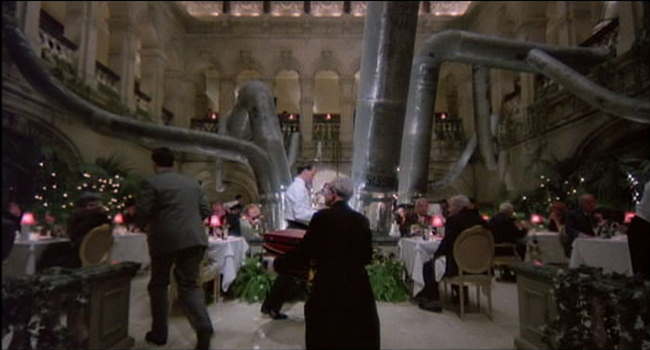
The Sound: Brazil’s score fully encapsulates the ambiance that Gilliam is expressing. We have high flowing orchestral pieces, cheesy, squeaky monophone songs, marches that integrate type-writers as the rhythm section, and all sorts of diversity that captures the quirky, bittersweet feel that Brazil often conveys. The continually harsh, metallic sound FX also highten the ambiance. What we are left with is a wonderful meshing of visuals and sound as a backdrop for the wonderful performances throughout.
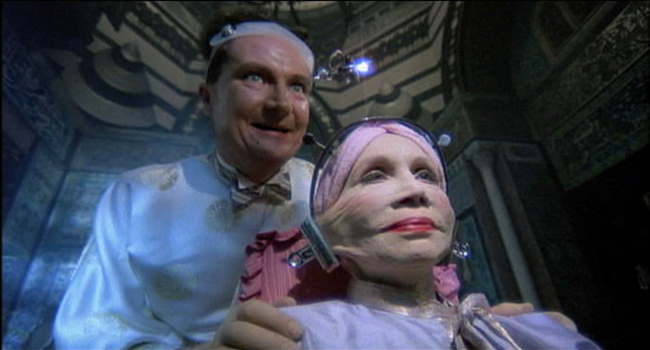
The Cast: One of Gilliam’s real skills in Brazil is taking an extremely large cast, filled with potentially interesting roles, and making them all meaningful. Continually, Brazil provides us a stream of totally interesting role players that add to the quirky universe that is this fantasized future. Robert De Niro is terrific as Harry Tuttle, a heat engineer-turned anarchist revolutionary. Michael Palin plays a terrific best friend and torturer, and Katherin Helmond plays a totally wierd, excentric but powerful mother. There are a number of other unique roles, including Ian Holm who plays a terrific cowardly, conniving boss, and Bob Hoskins as a slighted and crazed heat engineer. Jonathan Pryce is absolutely superb as the lead, and Kim Greist plays an interesting counter-point love interest. All in all, the roles come across as entirely memorable.
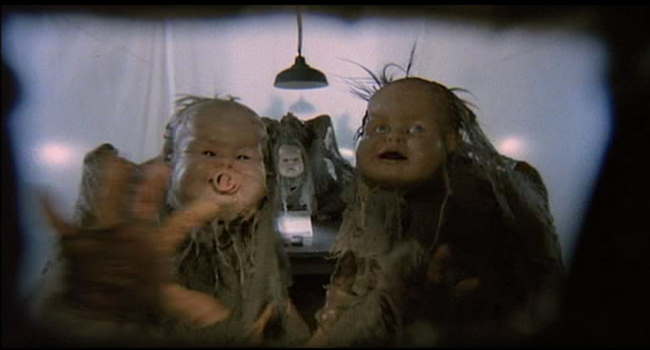
Dream Trapped Inside of a Nightmare: On the “Making of” segment of the Criterion Edition, Brazil is described as a dream trapped inside of a nightmare by star Jonathan Pryce. Pryce’s character, Sam Lowry, dreams the ultimate dream of happiness. In his dream, he is a fantasy warrior with angel wings who fights the denizens of the deep to rescue his idealized damsel in distress. In reality though, every aspect of his life is a nightmare. The “system” that is the bureaucracy, in an attempt to root out the terrorists, has extended its omnipresent tentacles into every aspect of life. At best, Lowry’s idealized reality involves being un-noticed by anyone. Unfortunately, once he discovers his idealized mate in real life, he can no longer remain obscure. He risks everything in a failed attempt to transform his dream into reality. In the end, Brazil shows how the depths of humanity can be crushed in a dystopic future where individuality and human rights become completely subservient to societal “welfare.”
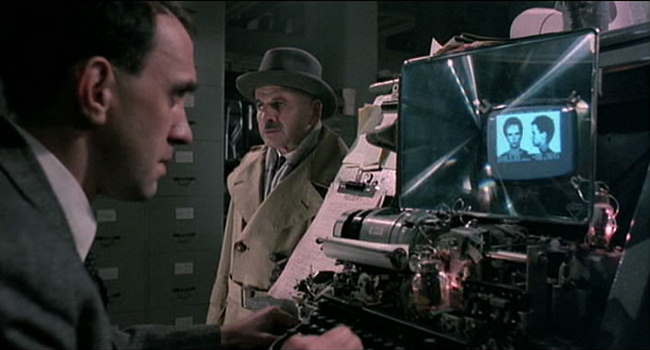
Use of Information: In Brazil, the collection and storage of information is paramount. While Brazil takes place in a dystopic future, computers have never advanced past arcane mainframes. The notion of usability, or people-centric computing is an anathema to the world of Brazil. The horror of horrors for the bureaucracy is finding a piece of paper without a home, or even worse, acknowledging that the “mistake” that caused this out of place paper belongs in your department! In Brazil, the fact that a person dies and a family is destroyed by this paperwork glitch is completely beside the point. In fact, the Samurai warrior character (see below) that Lowry fights in his dreams is fully comprised of computer parts – information and computers are indeed the ultimate evil for humanity.
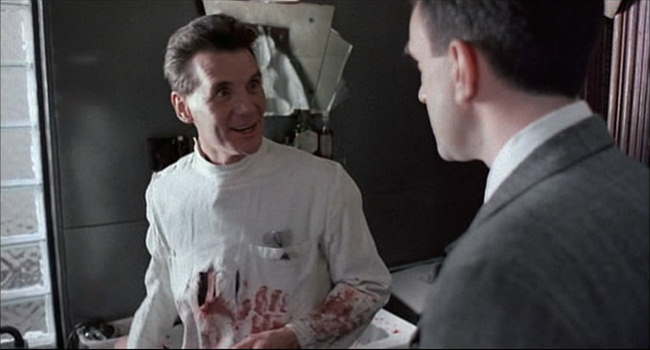
Terror As a Means of Extracting Information: One of the really interesting notions in Brazil that resonates today is the idea that the government engages in torture as a means of extracting information about potential terrorists. The throwaway comments from Sam, who has bought into this world, indicates that the choice HAS to be between this invasive government and sheer anarchy. When brought to the level of the individual, one has the sense that little by little, the government in Brazil slowly invaded individual freedoms as a way of combating the terrorists. The clear impression though is one of ever escalating acts – as the government becomes more invasive, the anarchic responses become more extravagant. De Niro’s character, the heroic anarchist heating engineer, represents this history of society, and humanity’s ultimate response.
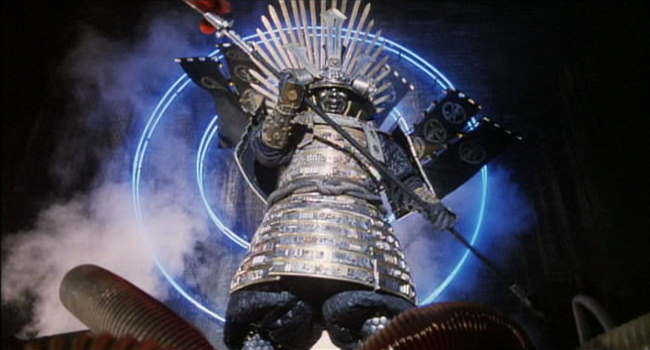
Is Brazil Cyberpunk? Due to the fantasy elements we see in Brazil, it’s hard to refer to it as a straight cyberpunk movie. While the dream sequences aren’t an issue, the dystopic future clearly isn’t supposed to represent an actual near-term future – it’s a fantasized version of issues currently playing out in society today. Still, the message of invasive technology and dominating totalitarian control destroying humanity is rarely done better than we see in Brazil. And while Brazil is wonderfully quirky, it’s the ending that truly feels like a cyberpunk film. Here we get both common cyberpunk visuals and philosophy in every sense of the word. The ending especially mimics many other cyberpunk films, where…
[SPOILERS – HIGHLIGHT THE TEXT TO SEE]
Throughout the last half of the film, Sam’s perception of reality becomes more and more governed by perceptions from his dream world. His actions leading to his final arrest are based on a perceptual mix of fantasy with reality. At the end, Sam is seems to make the conscious choice to disavow the real world in favor of his internally constructed fantasy. In this sense, Sam has finally attained the freedom he long sought after. Interestingly, a very similar approach is also used at the end of Save the Green Planet.
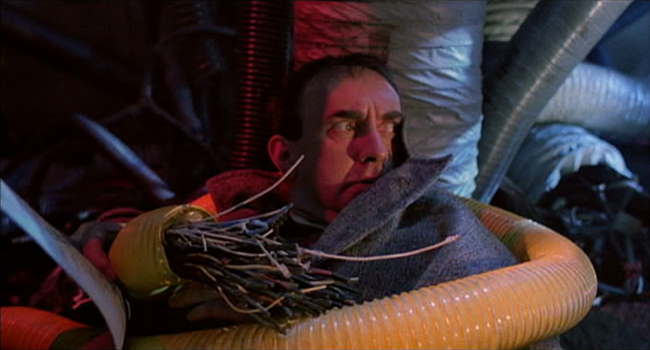
The Bottom Line: The world of Brazil is steeped in a runaway, controlling, technocratic bureaucracy that has its tentacles in every part of humanity. The ducts dominate every room, including the family household living room at the beginning. To humanity, the message is clear – “Your actual lives must be adapted to suit OUR needs, not yours; freedom now only exists in your own dreams.” In the end we are shown the myth of a free man in a tightly controlled society – the only freedom we ultimately possess is within our own perceptions – that is the only source where salvation can be found. Visually, Brazil is simply stunning. The story is incredibly creative, the acting is great (especially De Niro and Pryce) and the dialogue is terrific. Furthermore, your Gilliam’s wonderful sense of humor seeps out of every pore in this movie - such as the notion that the information retrieval department never retrieves any information. In short, Brazil is movie worthy of high praise.
Go to Page 2 for More Screencaps–>
~See movies similar to this one~
Movie Review By: SFAM
Year: 2003
Directed by: Andy & Larry Wachowski
Written by: Andy & Larry Wachowski
IMDB Reference
Degree of Cyberpunk Visuals: Very High
Correlation to Cyberpunk Themes: High
Key Cast Members:
Neo: Keanu Reeves
Morpheus: Laurence Fishburne
Trinity: Carrie-Anne Moss
Agent Smith: Hugo Weaving
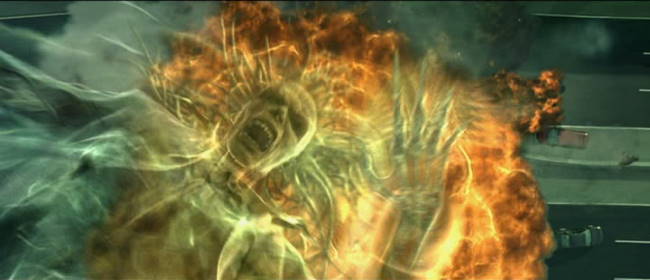
Overview: Matrix Reloaded, one of the most anticipated movies of 2003 provides a very interesting follow-up to one of the best, most influential movies in cyberpunk and all of Sci-Fi. Many have knocked this (and Revolutions more) for being a significant step down from the original movie, and to an extent they are in that the “newness” of the idea has worn off. But truly, it would be absurd to expect the Wachowskis to not use the universe they have already painstakingly created. In this sense, the sequels HAVE to provide a different sensation. In this sense, Reloaded does not disappoint. We get great performances by the Matrix leads, along with a number of truly terrific supporting roles. For this review, I’ll try to concentrate my comments more on the Sci-Fi aspects of the movies versus the religious narrative, as this also covered wonderfully elsewhere. I’ve also tried to use less well known screencaps on the first page of this review. To see some of the more popular Reloaded screencaps, go to page 2 of this review. Also, this review goes in line with my more in-depth assessment of the trilogy from a SciFi perspective:
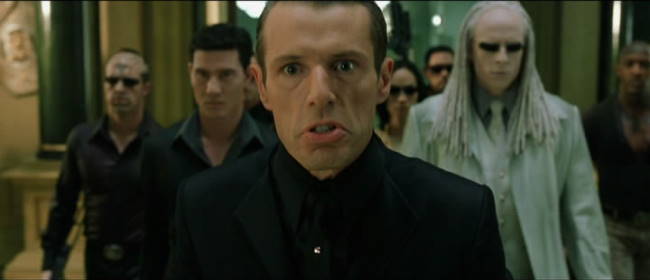
No “The Matrix Sucks/No It’s Great - You Just Don’t Understand!” Debates: Just a fair warning – if youre expecting Matrix sequel bashing, I’m afraid you’ve come to the wrong site. There are numerous places to read such banter if you’re interested. I absolutely love the sequels for a variety of reasons (some of which I explain below), but I really don’t mind in the least if you hate the sequels. Yet, for this movie, I’d really like the comments on this entry to be more related to the movie itself versus whether or not you hate the sequels. Believe me when I tell you I’ve participated in many more hours of discussion on this topic than I ever care to, and absolutely will not get into this in the comments section of this review. If you MUST engage in the “Matrix Sequels Suck/No - They’re Great, You Just Don’t Understand!” debate, please use this thread in the Meatspace.
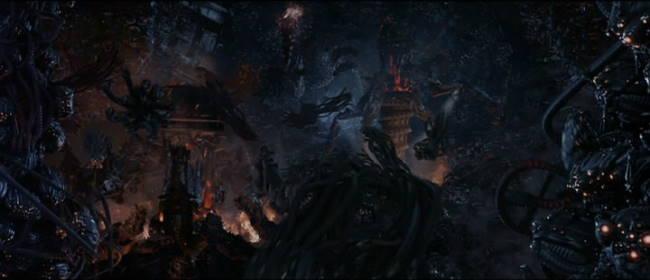
The Story: I’m going to go out on a limb here and guess that about 99.9% of you reading this review have already seen Reloaded, so I won’t spend much time on an overview of the story unless its specifically requested. In brief, Matrix Reloaded is the sequel to the Matrix, and is the second of three movies in the trilogy. In Reloaded, six months have past since the end of the Matrix, during which time, Morpheus, Neo and Trinity have been busting hump freeing massive numbers of battery people. In Reloaded, we get to see Zion, a return of Mr. Smith, and eventually, a fuller understanding of the nature of the Matrix and the Prophecy of the One.
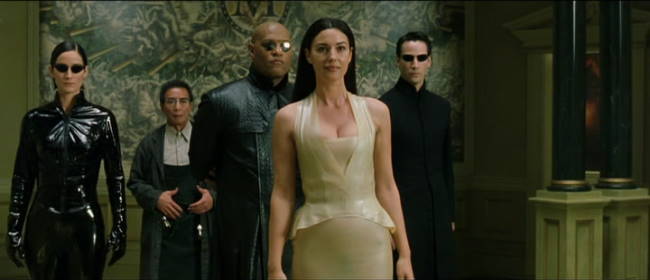
The Supporting Characters: One of the real strong points of Reloaded is the cool character additions. The best ones are of course the Merovingian (played magnificently by Lambert Wilson) and Persephone, played by the ultra-sexy Monica Bellucci in a totally hot see-through dress. When they are onscreen, both absolutely steal the scenes. Almost as terrific is the Architect (Helmut Bakaitis) and the blasé evil ghost twins (Adrian and Neil Rayment – who actually are twins) – they have to be up there as some of the best henchmen ever to grace the screen. Seraph (Collin Chou), Councilor Hamann (Anthony Zerbe), Link (Harold Perrineau), the Keymaker (Randall Duk Kim), and Niobe (Jada Pinkett Smith) all really add to the movie as well.
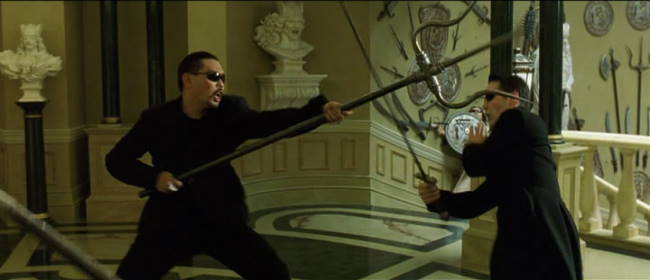
The Action: Reloaded is filled to the brim with awesome action scenes. In addition to some wonderful Woo-ping Yuen choreographed fights, we get one of the best highway chase scenes ever put on film. The Trinity motorcycle part in particular is just awesome. Truly though, serious credit has to go here to Keanu Reeves’ preparation and training for this film. By all accounts he was an absolute machine in terms of preparation. It really shows on screen. His wire work and martial arts scenes are just terrific (And no, I’m not comparing him to those in Hong Kong who’ve spent an entire career doing this stuff). The CG for the most part is absolutely top notch.

The Visuals: Matrix Reloaded has a lot more diversity in its visuals than the Matrix provided us. We have a few experimental shots like the graphic novel scene of Neo flying with the Moon behind him – and lots of yellows and greens. For yellows, we get rave scenes, explosions, and fights in a yellow weapons room. Greens, of course, still dominate the majority of the scenes – like the first movie, they are omnipresent in most low-light scenes. All in all, the visuals are incredibly diverse and interesting.
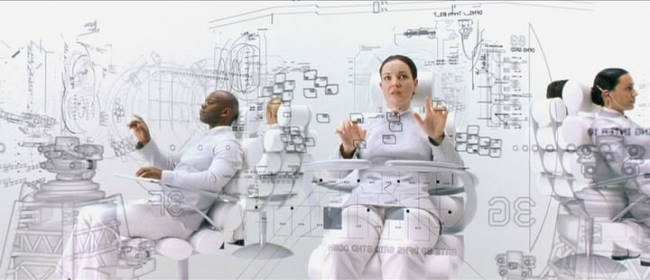
The Pacing: Matrix Reloaded starts off with a bang (literally) before getting into the story. We get a mixture of plot discussions, action sequences and philosophical breaks. But Reloaded is as a whole is definitely of a different style pacing than most movies. It and its sequel more closely resemble the approach taken in Oshii’s Ghost in the Shell, where there are philosophical and thematic discussions that are then played out in the action sequences. The ending clearly comes off as a cliff-hanger, which is to be expected considering this is the middle of a trilogy.
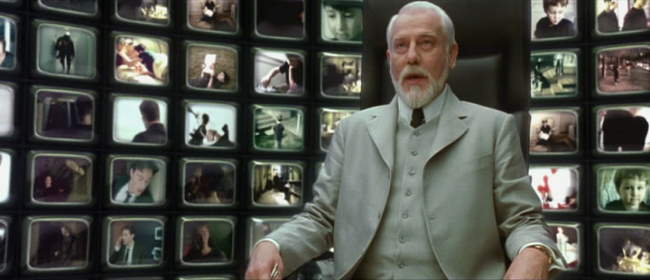
The Architect Conversation: The Architect conversation provides some of the best dialogue of the entire trilogy. This is a philosophical break, a plot buster, and more importantly, the major turning point in the trilogy. The Architect and his minions serve as the ultimate representation of a negative feedback (negating change from an initial goal state) control system. His whole purpose in life is to ensure a steady supply of power (electricity) to the Machine City. As the power is created off the electricity in humans, the Architect must develop a plato cave-like virtual reality simulation that provides humans with a believable reality. The Architect reveals the details of the control system that has kept the machines satiated with electricity for the past 600+ years. In this we find that the prophecy of the One is merely one more layer of control to maintain the status quo to handle the problems arising from freewill (more on this below). Unfortunately, something (or someone) has thrown a monkey wrench into his carefully laid plans. Neo has fallen in love, and in so doing, creates a personal connection with a human that is potentially larger than his overall connection with humanity.
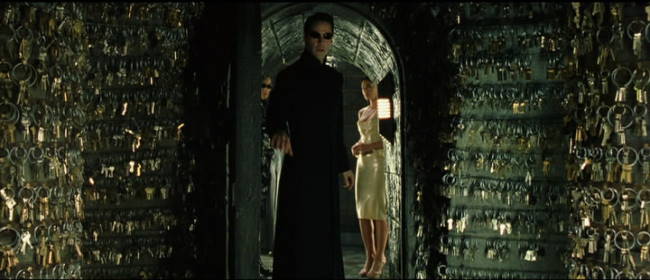
Freewill: Matrix Reloaded spends a good bit of the philosophical breaks discussing the impact of freewill on actions, decision making and on control systems. The Merovingian assets that without the “why,” freewill is merely a facade by those in power that is placed on the powerless. The architect who created the Matrix based on mathematical equations. While he has accounted for almost all anomalies, he had to develop a special periodic subroutine to address the issue of freewill. Because a very small subset of the population would reject the Matrix programming, there needed to be a way of handling this. His approach involves the creation of an external holding bin called “Zion,” which which he would let fill up with the problem battery people, and then every hundred years or so would clean out the holding bin and start again. Simultaneasly, Morpheus, who is unaware of this freewill control subroutine, sees the prophecy of the One as a deterministic journey - one which both reduces the power of freewill while supposedly saving Zion.
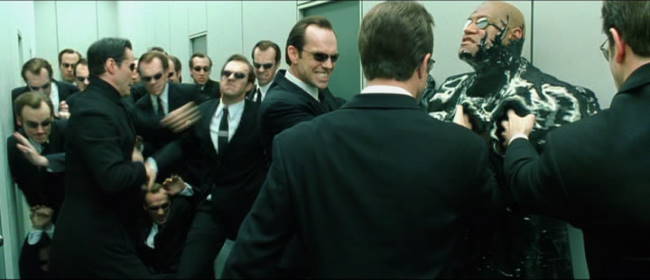
Positive Feedback Out of Control: From a cybernetic standpoint, Positive feedback, or the deviation from an initial goal state, plays a huge role in both reloaded and revolutions. In fact, both movies constitute an emergence and interplay among dueling feedback systems. The architect has created a negative feedback system that has been in force for at least 600 years. Yet now, the perturbations to the negative feedback control system are systemic – in fact, they constitute an initial kick in an entirely new direction. The study of cybernetics tells us that negative feedback systems are destroyed – often never to be repaired to their original state – if the upper or lower threshold values in the are exceeded. For instance, if the body temperature in a human exceeds 106 degrees Fahrenheit, the human will die. In the futuristic dystopia of the Matrix, this is the strategy the Oracle takes. The rationale is that unless the architect’s control system is rendered moot, the “ebony and ivory, living in perfect harmony” future (with machines and humans) the Oracle desires cannot occur.
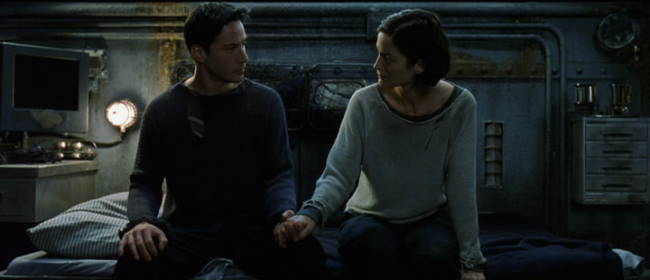
Elements of the positive feedback system, represented in totally by the Oracle and the causality she creates, include both a modification of Neo’s operant conditions and an intrusion into Mr. Smith’s deletion. Neo’s love for Trinity changes the outcome of the Architect’s freewill subroutine – instead of having only one real choice (saving humanity), Neo has a new choice – save trinity now and spend 24 hours trying to rescue Zion and humanity or continue with the control system which will wipe out Zion. Additionally, Mr. Smith has been transformed into a virus. When Neo destroys him in the first movie, Mr. Smith did not disappear – instead (as we find out in Revolutions), the Oracle intervenes and creates the new, viral Smith. While there is no resolution to this in reloaded, the context is set for the resolution in Revolutions.
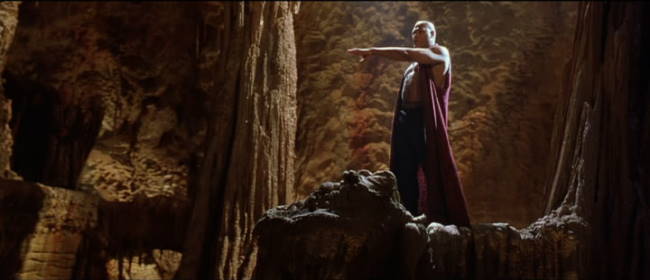
I Believe…: I believe this phrase (“I believe”) is used twenty times or more in Reloaded. There are times it fits perfectly, whereas others it seems to interfere with the dialogue. The scene where Commander Lock is discussing strategy with the Council is the most egregious example of this. Versus “I believe we need every ship…” it would have been far more realistic had he used a simple “We need every ship if we are even to have a chance…” The problem of course is the whole issue of whether or not the Commander and Council believe in the Prophecy of the One. As impending doom draws nearer, the tendency to place faith in supernatural explanations for salvation becomes too great to resist.
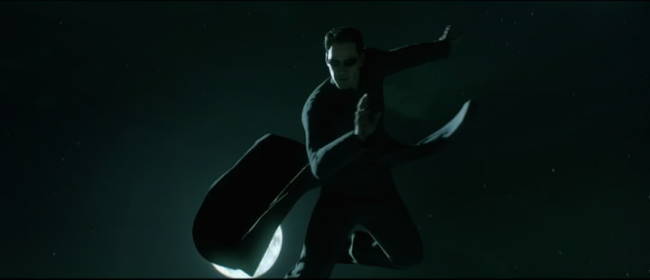
The Bottom Line: The Matrix Reloaded is a terrific follow-up to one of the most influential movies ever. The Wachowski brothers have provided a movie where the action is terrific, the characters are memorable, and the narrative is complex and interesting. Lawrence Fishbourne as Morpheus in particular shines here, which is great, in that is role is significantly diminished in Revolutions. While Reloaded suffers somewhat from being the middle movie in a trilogy, I think it handles this well. The ending provides us with a cliffhanger, which, at the time of release, sparked IMENSE numbers of interesting theories and ideas. I’m guessing most of you have watched Reloaded, so I feel strange giving a plug to watch it. All I can say is I love it.
Page 2: More Screencaps –>
~See movies similar to this one~
Movie Review By: SFAM
Year: 2005
Directed by: James Bai
Written by: James Bai
IMDB Reference
Degree of Cyberpunk Visuals: Low
Correlation to Cyberpunk Themes: High
Key Cast Members:
- Puzzlehead/Walter: Stephen Galaida
- Julia: Robbie Shapiro
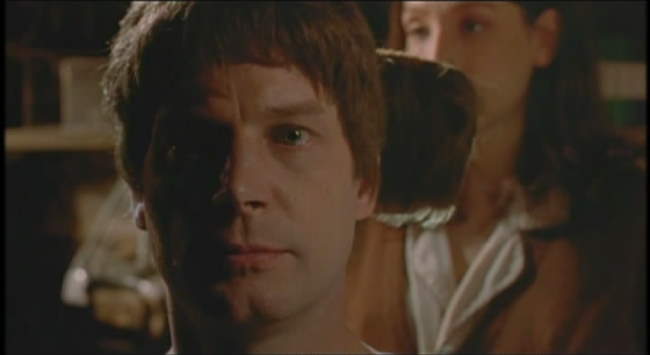
Overview: First let me give a great big THANK YOU to Puzzlehead Director, James Bai, who gave me a copy of this movie to review, even though it has not yet been released for general distribution (Indie filmmakers - take note! Feel free to send me your cyberpunk films to review prior to release!  ). In looking at the movie poster and in hearing from others, I just HAD to get a copy of this to watch. Puzzlehead is about as far as you can get from a Hollywood production. You won’t see fast-paced action sequences here (quite the contrary – the movie is very slow paced), nor will you get futuristic scenery, or high-end FX. But make no mistake – even though the cyberpunk visuals are sparse, this is DEFINITELY a cyberpunk movie. The themes introduced and the fractured sense of humanity are fully cyberpunk. ). In looking at the movie poster and in hearing from others, I just HAD to get a copy of this to watch. Puzzlehead is about as far as you can get from a Hollywood production. You won’t see fast-paced action sequences here (quite the contrary – the movie is very slow paced), nor will you get futuristic scenery, or high-end FX. But make no mistake – even though the cyberpunk visuals are sparse, this is DEFINITELY a cyberpunk movie. The themes introduced and the fractured sense of humanity are fully cyberpunk.
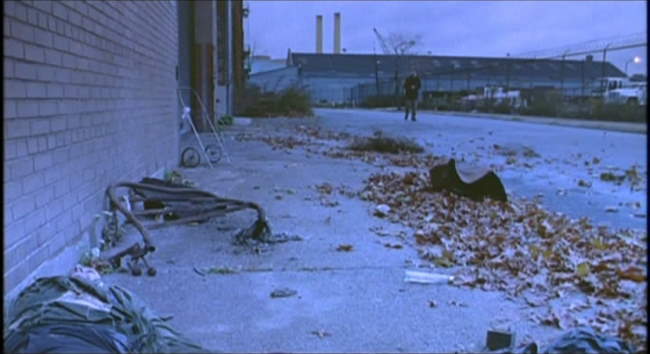
The Setting: Puzzlehead takes place in a futuristic dystopia, where all modern technology has been destroyed. Government still exists, but has devoted all resources for medical services. Unfortunately, the movie doesn’t give us enough intro as to why this occurs – the introductory narrative does mention that anti-federalists and the luddites forced the closure of all biomechanical laboratories (apparently they got rid of all “regular” technology in the cities as well), and that now, most resources are devoted to repopulation of the species. We can infer that the significant lack of people and an extreme reaction against technology coupled with at least a semblance of government might be due to some sort of genetic experiment gone awry.
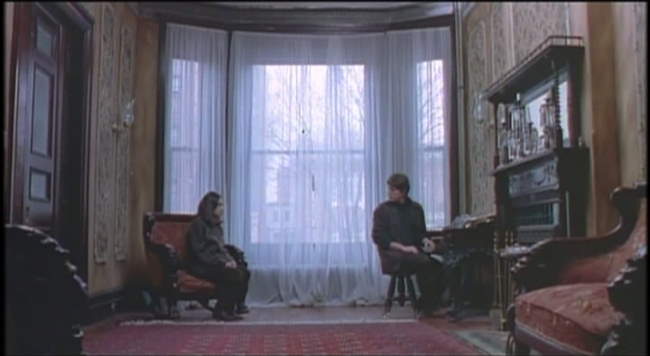
The majority of the movie takes place in a Victorian style townhouse, completely devoid of modern technology. Other sets include a decrepit, failing local grocery story, and a run-down apartment. Most external settings are comprised of run-down industrial areas. While the movie itself takes place in the future, aside for a few technology shots, the audience has to rely on the narrative and suspension of disbelief for this to work.
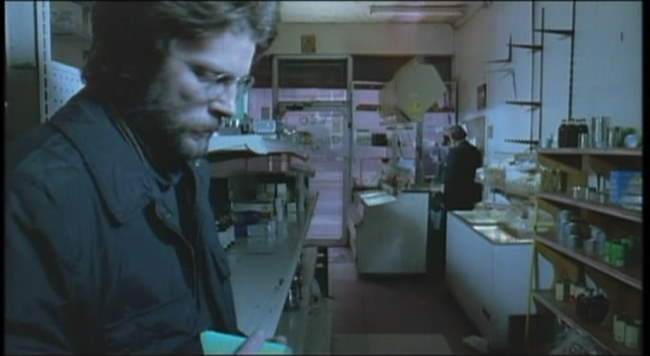
The Story: Humanity, it seems, is a shadow of its former self – random violence amongst is the norm, and virtually everyone we see in Puzzlehead is emotionally fractured. What little remains of the beleaguered populace is either making their way by becoming completely self-sufficient or by leaching off of others. It is in this setting that we focus on Walter – an emotionally fractured scientist who has trouble even walking out his front door. Unfortunately for Walter, he is in love with the very reclusive, local grocery store attendant, Julia (wonderfully played by Robbie Shapiro), but has never gained the courage to even attempt talking with her.
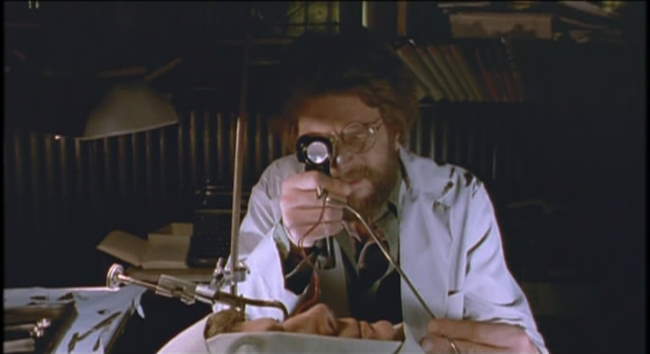
Walter (played by Stephen Galaida) decides to create an android named Puzzlehead (also played by Stephen Galaida) completely in his own image, apparently to serve as his external persona to interact in a world he prefers to avoid, and also to hopefully prompt interaction with Julia. After creating Puzzlehead, Walter spends significant time instructing Puzzlehead how to act. Walter is very derogatory controlling in his training of Puzzlehead. While Walter creates Puzzlehead with sentience, he severely restricts Puzzlehead’s behaviors. Over time, it becomes apparent to Puzzlehead that Walter has created and is using Puzzlehead for his own selfish purposes. In effect, Puzzlehead realizes that Walter sees him as nothing more than property. After Walter allows Puzzlehead to start venturing forth into society, he eventually comes into contact with Julia. Things get interesting when Walter follows up on Puzzlehead’s initial encounter with Julia.
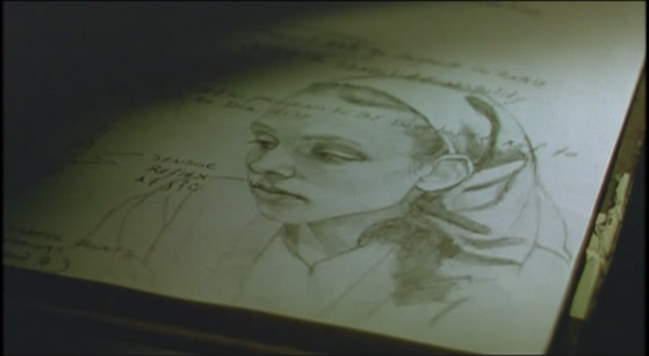
Puzzlehead Works Better on Second Viewing: Puzzlehead is told in narration format by the android, Puzzlehead, long after these events have taken place. In total, this approach works pretty well. Although, it does have the added side-effect of making the movie work better upon second viewing. There are a number of apparently throw-away comments that the narrator (Puzzlehead) gives that the audience simply can’t process until they’ve seen the story. However, upon second viewing, this adds a context to the movie that is missing the first time through.
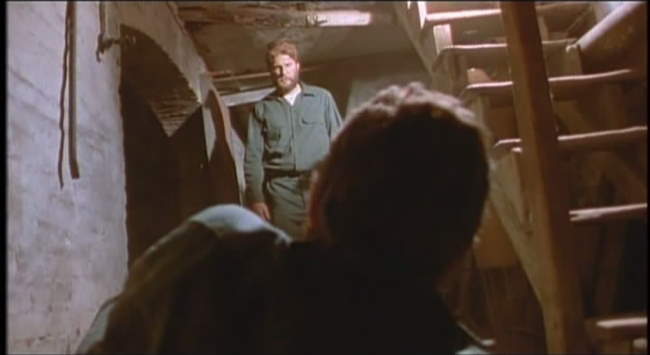
The Cinematography: Because the pacing in Puzzlehead is very slow, it runs the risk of inducing audience boredom. Luckily, this is largely overcome by the continually excellent shot selections throughout. It’s clear that significant thought went in to camera angles and interesting lighting approaches. Continually, we are treated to shots with extreme close-up foreground elements with action and movement occurring in the background. This approach, along with many low angle shots contributes to the sense of alienation the narrative provides.
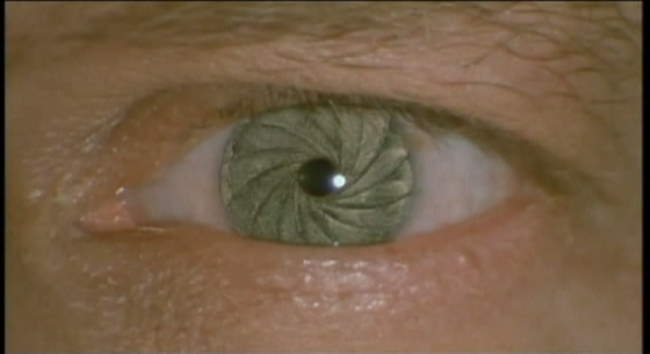
How does an Android Develop “true” Freewill? Puzzlehead provides us with a very interesting take on the development of android sentience and self-awareness. Puzzlehead is created using a neuron-scan from his creator’s brain (Walter), and thus, has all of his memories (yet, most are rendered meaningless without the context) – unfortunately, this scan has also left Puzzlehead riddled with Walter’s flaws. Puzzlehead’s biomechanical brain, like a human’s brain, is structured and controlled by belief structures and associative memories. Emotions, which are already troubling and confusing for Puzzlehead, develop into uncontrollable deviant behaviors.
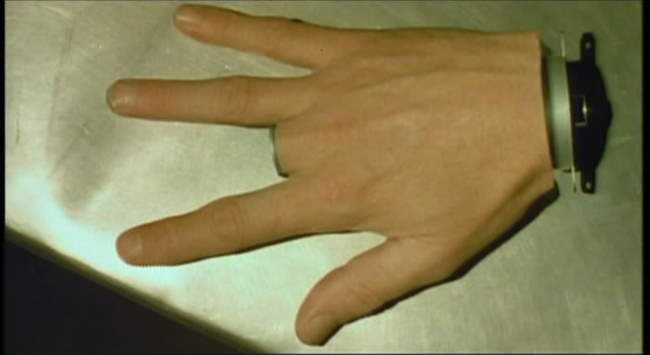
As Puzzlehead begins to develop self-awareness and freewill, he notices these tendencies that control him. These behaviors impact Puzzlehead’s ability to act the way the “real” him wants to act. His android brain, a combination of (undefined) biomechanical parts, is similar to a human’s in that he can recognize when he is doing deviant behavior, but cannot change his actions. But unlike humans, because Puzzlehead is an android, he can consider options for reprogramming his initial operating conditions. One question Puzzlehead ultimately poses is this – do androids have the possibility of becoming “exactly” the type of sentient being they want to become?
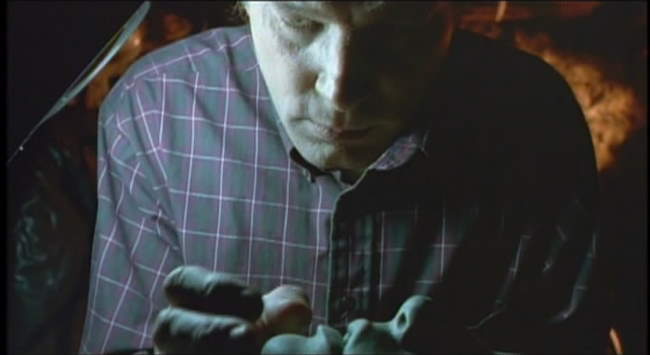
This potential ability to be “perfect” in the sense of transforming into exactly what Puzzlehead wants to become serves to reinforce Asimov’s notion that sentient robots would consider themselves superior to humans. In Puzzlehead, we get a realistic glimpse of how this might look.
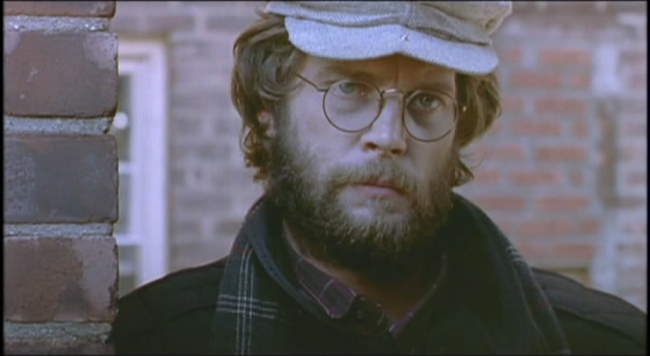
Puzzlehead is an Intensely Personal Film: In judging this movie strictly on what I could learn from watching it I give it 7 stars (I would give it 7.5 if I had half stars – something I’m still working on). As a bonus, in talking with the film maker, it turns out that the film itself is an intensely personal metaphor of James Bai’s – one that you would never guess but makes perfect sense once you are told of it. Watching it with this knowledge, the complexity of the movie itself ramps up significantly, as does its accomplishment as a film – so much so that I’m strongly inclined to add another star to the review. I won’t give this part away, but instead offer Mr. Bai the opportunity to comment here if he would like to describe Puzzlehead’s personal nature in his own words.
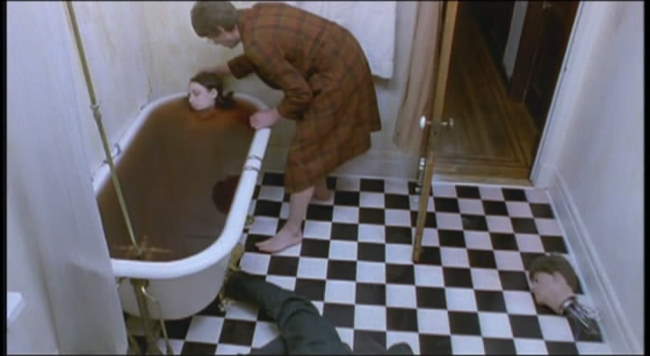
The Bottom Line: James Bai has created a very low-budget flick that’s definitely worth a watch. While I had some problems with the acting in some of the early scenes (Galaida as Puzzlehead acts way too human at the beginning, but eventually settles into the role), and a few of the visuals which seemed too 70s looking, these are diminished as the movie progresses. Bai poses some interesting thoughts on android development – some of which are unique to movies. If you can stand a very slow-paced, intellectual cyberpunk flick without a lot of cyberpunk visuals (although I LOVE the bathroom and broken arm scenes), Puzzlehead is definitely worth a watch.
~See movies similar to this one~
Movie Review By: SFAM
Year: 1997
Directed by: Luc Besson
Written by: Luc Besson & Robert Mark Kamen
IMDB Reference
Degree of Cyberpunk Visuals: High
Correlation to Cyberpunk Themes: Low
Key Cast Members:
Korben Dallas: Bruce Willis
Leeloo: Milla Jovovich
Jean-Baptiste Emanuel Zorg: Gary Oldman
Father Vito Cornelius: Ian Holm
Ruby Rhod: Chris Tucker
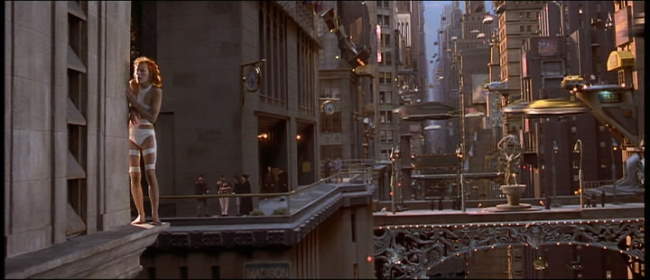
Overview: Some movies are just absolute absurd fun – so fun that you end up watching it endlessly. The Fifth Element is that way for me, and is a movie I’ve seen around 20 times or so. The tone of the movie is too light-hearted to be considered a real cyberpunk movie, but like Tank Girl, we can consider this a cyberpunk comedy. The characters are all a hoot, and the movie never takes itself seriously – in fact it’s almost always over the top. Many of the cyberpunk themes still exist in Fifth Element, although, again, they are enacted in a light-hearted way. It’s the visuals that really bring Fifth Element into the cyberpunk subgenre.
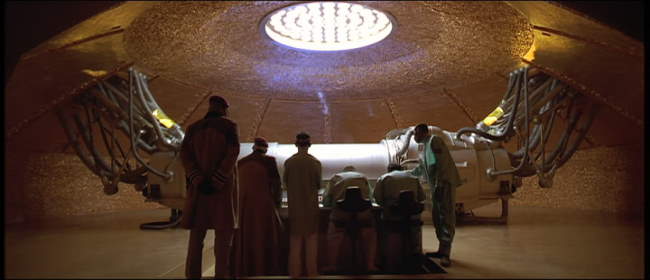
The Story: 217 years into the future, ultimate evil is again coming to destroy the earth. Ultimate evil takes the form of an absolutely massive malevolent ball of blackness that is on a course to destroy earth. Every attack the Federated Territories try only makes it larger. It turns out that a group of priests has been keeping the ancient technology necessary to destroy ultimate evil – four stones representing the 4 elements, which surround a fifth element. In this case, the fifth element is s beautiful girl (Milla Jovovich), reconstructed from the remains of a small DNA sample.
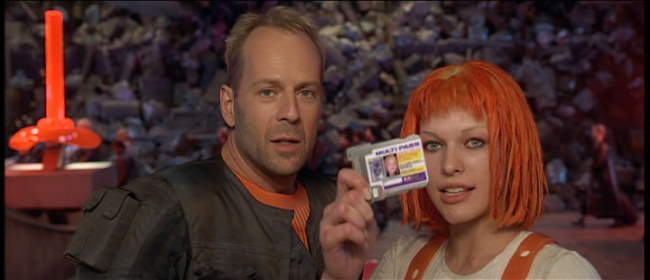
“Leeloo Dallas, Multi Pass”
Korben Dallas (Bruce Willis) is a down and out highly decorated former military commando, now turned failing cabbie, who has a beautiful girl named Leeloo (Jovovich) fall into her cab – literally! The authorities are after her, as it turns out she has escaped those who recreated her. She can’t speak English yet she figures a way to ask for help. After she asks, Korben Dallas takes her to the priest, Father Vito Cornelius, who recognizes her as the Fifth Element, and promptly kicks Korben out.
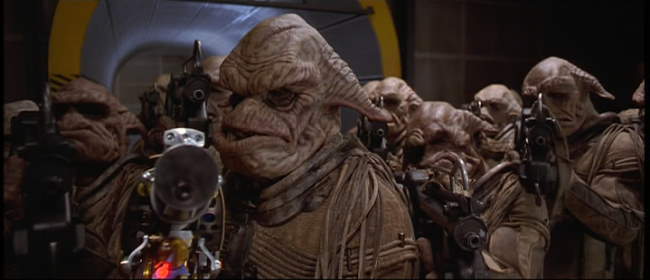
From there, things get crazy. The military approaches Korben for a secret mission to retrieve the stones necessary to stop ultimate evil. The stones are hidden with a famous Diva who is performing at the famous floating hotel, Floston Paradise. At the same time, Zorg, an evil corporate CEO (Gary Oldman) has hired a group of Mangalores (evil, ugly aliens) to retrieve the stones. Simultaneously, Father Vito Cornelius and Leeloo also find a way get to Floston Paradise to retrieve the stones. Things get even weirder when the famous radio host, Ruby Rhod (Chris Tucker), an outrageous guy with a penis-head hairdo hosts the Floston Paradise experience with Korben as his guest!
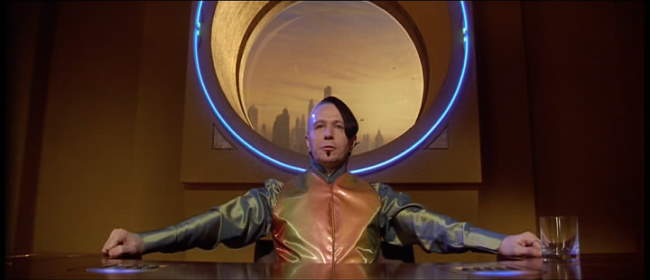
The Acting: All the main characters in the Fifth Element are quirky and memorable. Bruce Willis really works as a former hero, now on his last leg. Jovovich is beautiful and otherworldly. Tucker is a riot! This movie really got him known (Rush Hour made him famous though). And Gary Oldman as Zorg is flat out awesome as a completely crazed power-hungry evil doer with a quirky sense of style and salesmanship. Truly, Besson did a great job in casting this.
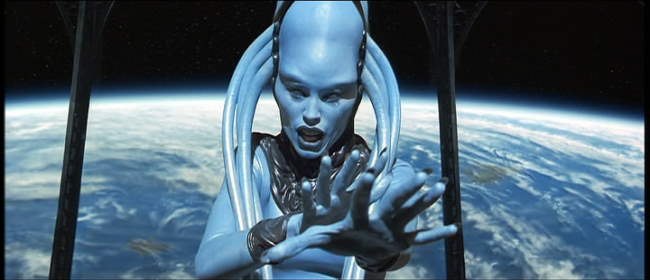
The Visuals: The Fifth Element totally rocks in the cool futuristic visuals department. The colors include dark yellows with neon blues for the backgrounds, saturated blue scenes and orange clothes for the leads. But its the city-scapes, reminiscent of Lang’s Metropolis that are especially memorable. They flat out nail a far out vision of the future. Additionally, we have airports with 30 foot tall trash heaps due to a garbage worker strike, fully automated, ultra-processed McDonalds, deaf rock stars
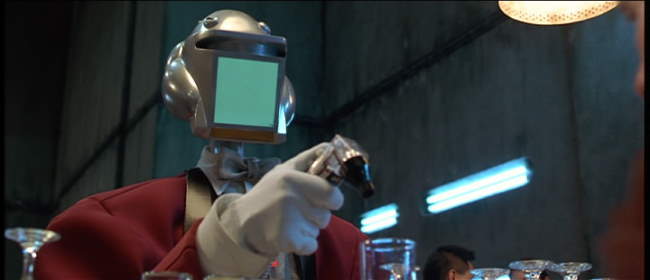
The Editing: The editing in the Fifth Element is just terrific. The splicing of the various story strands, as crazy as they are, flow wonderfully. In discussing the missing stones, the simultaneous, intermixed dialogue between Leeloo and Father Cornelius and Zorg with the Mangalores are just one terrific example of this; the Diva opera singling intermixed with Leeloo’s fighting is another. With the amount of stuff going on here, this could have ended up a disaster. Sylvie Landra, who also edited Leon – the Professional, deserves heaps of praise for this.
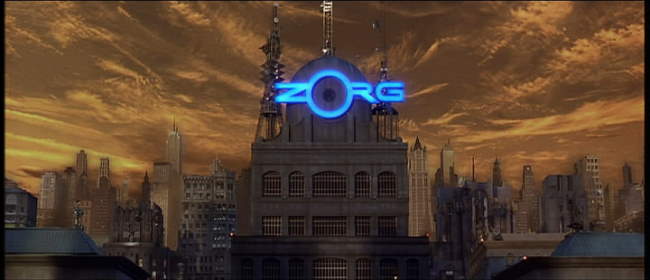
The Fifth Element Cyberpunked Future: Dropping the crazed fantasy aspects of the stones and ultimate evil, The Fifth Element gives us a pretty dire view of the future. Cities are built high to escape the constant layer of smog that coats the surface; corporations are all-powerful; governments are impotent; fashion statements have gone seriously awry; cockroaches are used as intelligence, surveillance and reconnaissance systems - but at least we still get cheap Chinese food! Plus robots now do all our menial work!
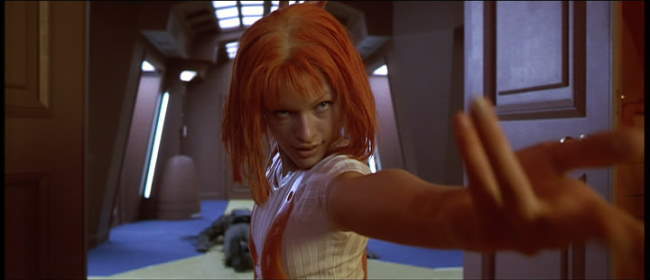
The Bottom Line: No, the Fifth Element is not intended to be taken seriously. Still, this movie is just far more enjoyable than it has any right to be. The action and romance are fun, the characters are unforgettable, the story is entertaining, the music is great, and the visuals are marvelous! The Fifth Element has been in my regular heavy watching rotation since it came out. Give this a watch if you’re looking for a witty futuristic cyberpunk action-comedy flick.
Go to Page 2: More Fifth Element Screencaps–>>
~See movies similar to this one~
Movie Review By: SFAM
Year: 2002
Directed by: Gary Fleder
Written by: Philip K. Dick (story), Scott Rosenberg (Adaptation), Caroline Case et a. (screenplay)
IMDB Reference
Degree of Cyberpunk Visuals: Medium
Correlation to Cyberpunk Themes: Medium
Key Cast Members:
Spencer Olham: Gary Sinise
Hathaway: Vincent D’Onofrio
Maya Olham: Madeleine Stowe
Cale: Mekhi Phifer
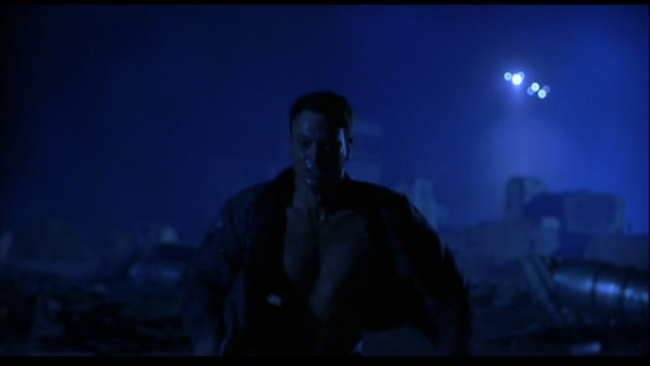
Overview: Impostor got bashed by critics for having bizarre cut always, too many slow motion scenes, and generally weird and herky-jerky cinematography decisions. Additionally, others criticize it due to originally being a 30-40 minute short that got extended into a full-length movie. While all true, I truly like both the story (basically the Fugitive, done in a near future setting) and the acting, especially by Gary Sinise and Madeleine Stowe. While the cinematography is definitely subpar in this Philip K. Dick story, the movie itself is still worth a watch.
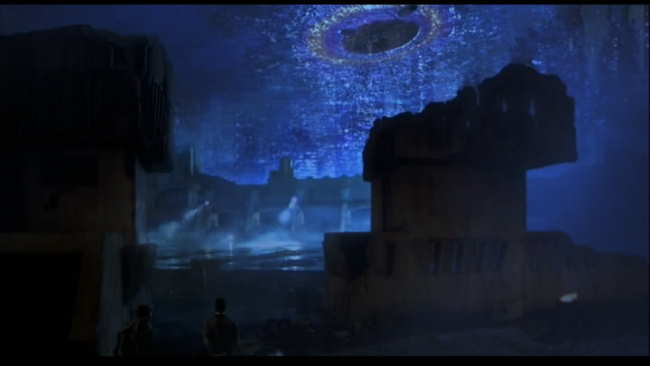
The Story: Impostor is set in the year 2079, a time when a race of aliens are attempting to invade the earth. To protect the population, humans now live in high-tech “bubbles” which seem to be able to keep out Alien weapon systems. Because of this, the aliens have resorted to creating DNA-based replicants, not unlike those in Battlestar Gallactica, by a process which apparently involves copying captured humans. These replicants are in actuality very powerful bombs, but have no self-awareness of being replicants – when their “trigger” is invoked (such as being in close proximity to their target), they explode.
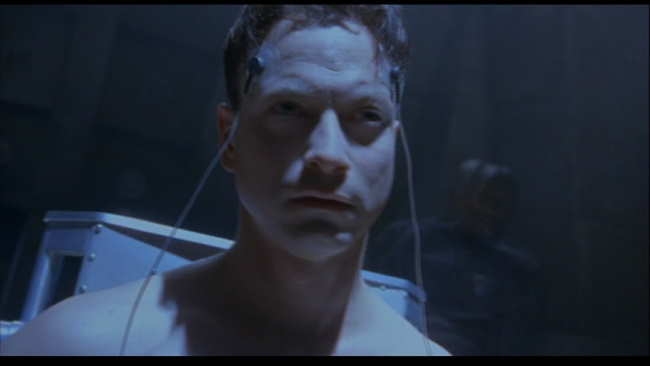
Sinise plays Spencer Olham, a weapons scientist who has been accused of being replaced by a replicant (called a cyborg in the movie). The security head (Vincent D’Onofrio) captures him and threatens to rip out his heart in order to prove that he’s not a human. Sinise escapes and then engages on a journey to prove his innocence. Olham determines that he can prove his innocence by equipment at the hospital where his wife (Madeleine Stowe) works, that compares a previous body scan with his current body. Unfortunately, he’s already gotten out of the city, and now needs to figure out how to get past security to return.
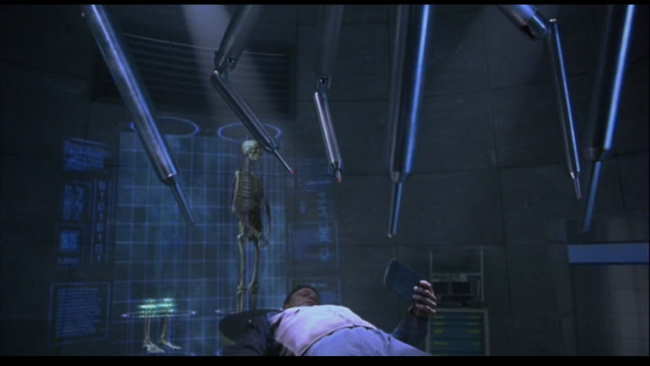
How Do You Know You’re You? This, in essence is the question Impostor is asking when it’s not in chase-filler mode. Is Spencer Olham a human caught in a horrid mistake, or is he a cyborg comprised of human-like bio-matter that is in actuality a powerful bomb sent by aliens to infiltrate Earth’s defenses in order to kill human leadership? If you were a cyborg-replicant imbued with the memories of the original host, how could you figure it out? Imposter briefly mentions the notion that the cyborgs don’t have a soul, but this is never pursued. One wishes they had come up with some way of quantifying a soul. But in the end, we are left to answer this question ourselves.
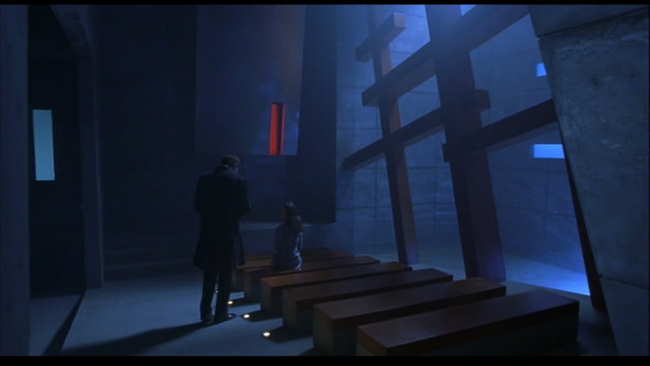
The Middle “Chase” scenes are Filler: Originally, Impostor was shot as a 30-40 minute movie short that was intended to be part of a larger collection. Apparently, Miramax liked the short enough (or cooled to the short collection idea) that they wanted it extended into a full length feature film. However, in doing so, they were left with a relatively tight beginning and tight end, and then a vast chasm of nothingness in the middle. By and large, the middle is filled with semi-pointless chase scenes that are sprinkled with people that aren’t germane to the central plot. Now we get a whole underground dystopia thing added to the mix, whereby it turns out that the nice hospital is ONLY for those who live in the bubble, while those in the outer area get little or no medicine and support. In its better moments, the middle part of the movie seems to want to emulate a “Fugitive” type feeling, but this doesn’t always work well. The DVD also includes the original movie short which is definitely worth a watch.

The Visuals: Impostor’s vision of the future is terrific in some places and haphazard in others. The cityscape scenes look right out of blade runner, the bubble city coverings, torture look great, but the majority of Imposter involves treks through regular looking tunnels. The torture equipment and medial imagine equipment are both more than passable. Imposter is strongly dominated by blue tones, which pervade most every aspect, from the chase scenes to the interrogation scenes.
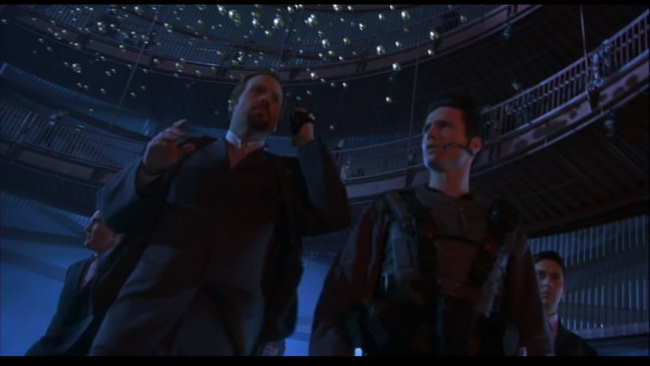
The Acting: By far, the best aspect of Impostor is the acting.Gary Sinise in particular really sells his role well, but Madeleine Stowe and Vincent D’Onofrio also give high quality performances, and Mekhi Phifer is at least passable. With slightly worse performances, Imposter could have easily ended up in the cheesy “B” Movie bin. The effects are uneven enough (some looked great, others looked TV-ish) that solid acting was a must to keep this movie watchable.
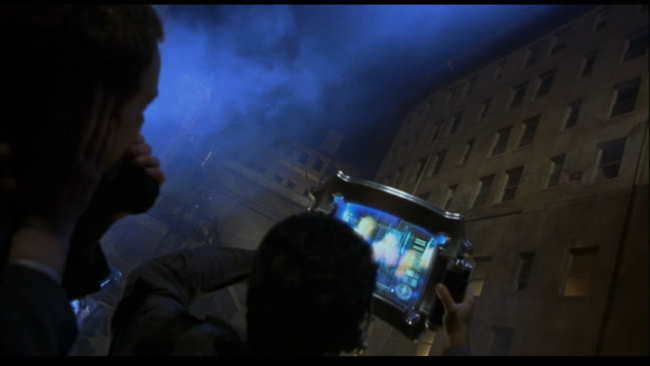
The Editing: Impostor is rightly criticized for crazy and continuous cut-shots. Rare is the shot that lasts more than 4 to 5 seconds before cutting to another view. The goal was to add to the tension of the chase scene, but the editors went overboard. Especially when combined with some strange shot angles, Imposter almost takes on an experimental vibe, as if they weren’t sure what would work, so they tried various different things.
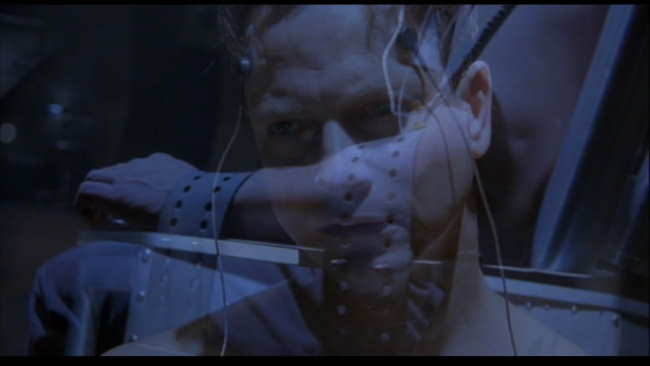
The Bottom Line: While this “Fugitive-like” movie has lots of interesting scenes, it’s the ending that I really like - definitely a cool twist. The acting is solid and the visuals are sometimes, but not always, pretty decent. There are lots of pointless tunnel-running that easily could have been cut by 15-20 minutes, and also, there are enough questions and plot holes that stop Imposter from being a great movie. Still, the question of determining humanity is an interesting one, and is well executed.
~See movies similar to this one~
|











































































































